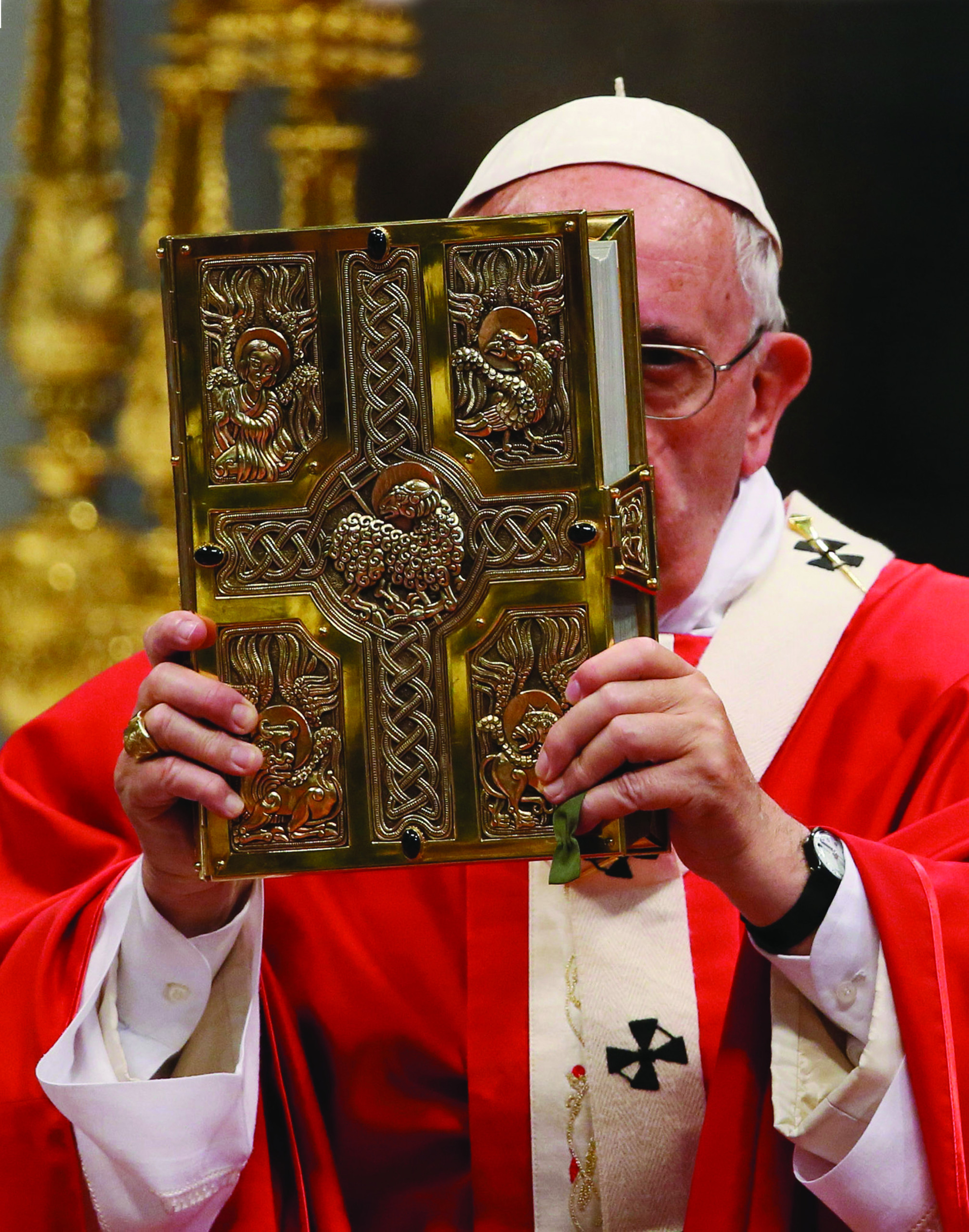 By now, gallons of ink have been spilled in an effort to come to grips with Pope Francis’ July 2021 motu proprio (“on his own initiative”) letter to the world’s bishops placing new and dramatic restrictions on the celebration of the pre-1970 Mass (variously called the “Traditional Latin Mass” — TLM, or the “Extraordinary Rite” as it was christened by Benedict, or the “usus antiquor” — UA).
By now, gallons of ink have been spilled in an effort to come to grips with Pope Francis’ July 2021 motu proprio (“on his own initiative”) letter to the world’s bishops placing new and dramatic restrictions on the celebration of the pre-1970 Mass (variously called the “Traditional Latin Mass” — TLM, or the “Extraordinary Rite” as it was christened by Benedict, or the “usus antiquor” — UA).
Many progressive commentators have hailed the Pope’s act as a welcome corrective to what they see as pernicious divisiveness in the Church, fueled by attendance at the Traditional Latin Mass.
Many others have vigorously criticized the move, saying that the reasons the Pope puts forth for curtailing the traditional Mass are woefully inadequate compared to the harms of depriving a growing body of TLM adherents of the Mass they have come to love. (The majority of those who attend the TLM are no longer older people who grew up with the rite, as was the situation under John Paul II when he first expanded its availability.)
Some also point out that making the Traditional Mass disappear altogether — taken, by friend and foe alike, as the apparent goal of the Pope’s instruction — would harm the Church herself. Severing the patrimony of the Church’s liturgy of at least a thousand years, probably much longer, in one fell swoop — as if the Church’s relevant liturgical history only began in 1970 — is hard for many Catholics, lay and religious, to swallow.
Pope Francis, perhaps acting on the basis of information that may or may not be accurate, seems to lay a large amount of blame for traditional-vs.-progressive conflict at the feet of those who worship at the TLM, accusing them of, in the main, “rejecting Vatican Council II.” It is a blanket accusation that many find puzzling, even incomprehensible.
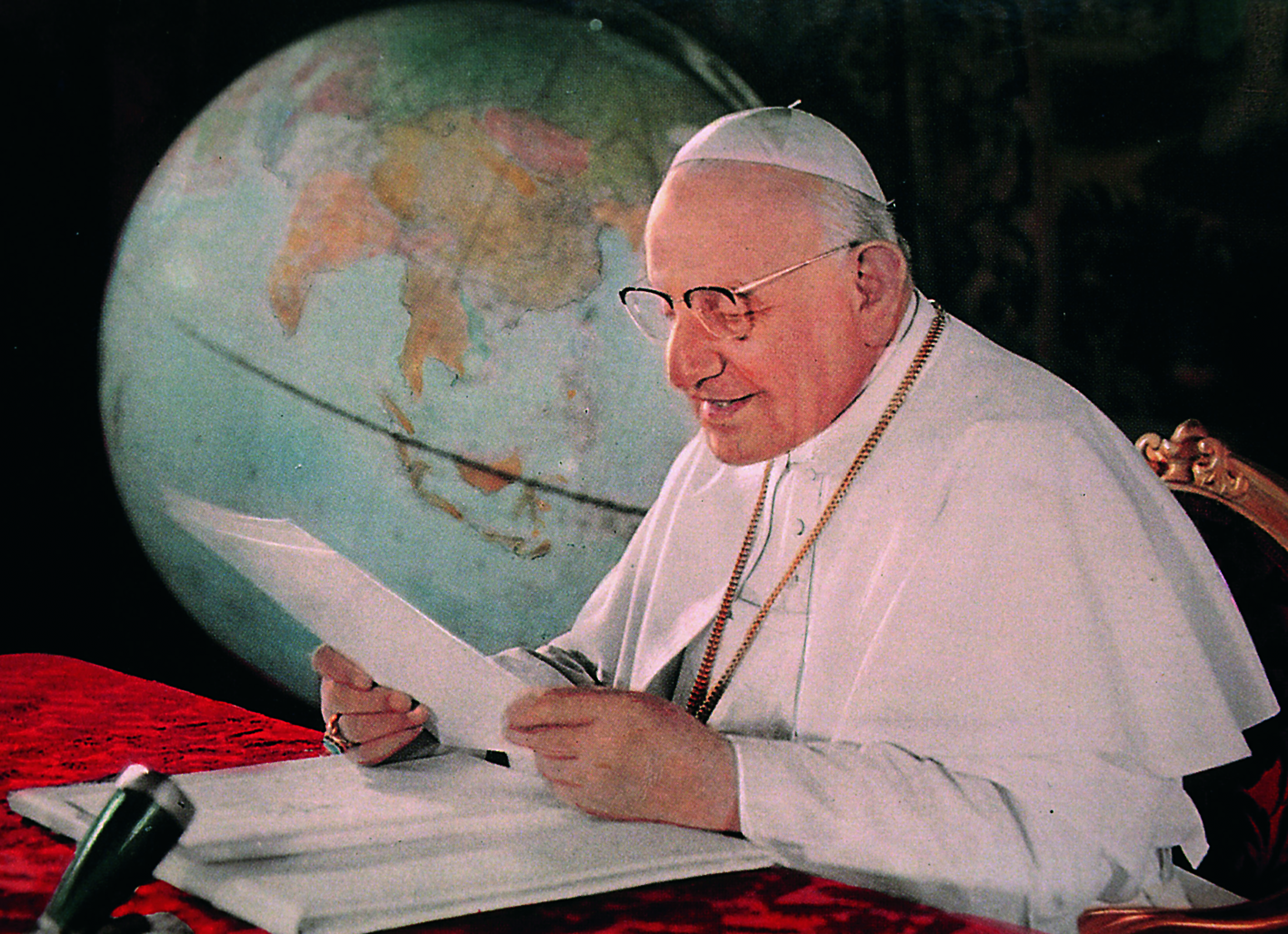
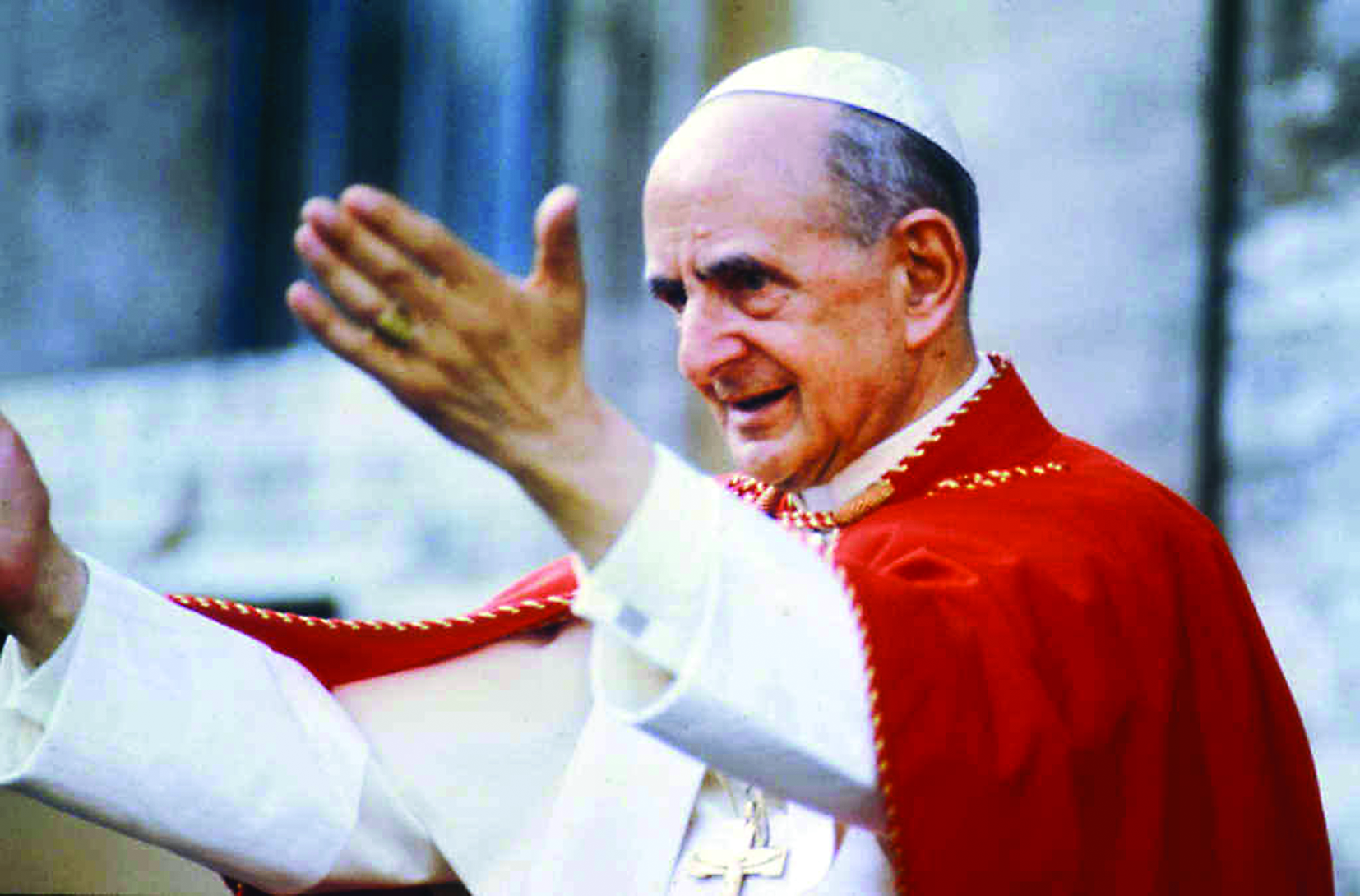
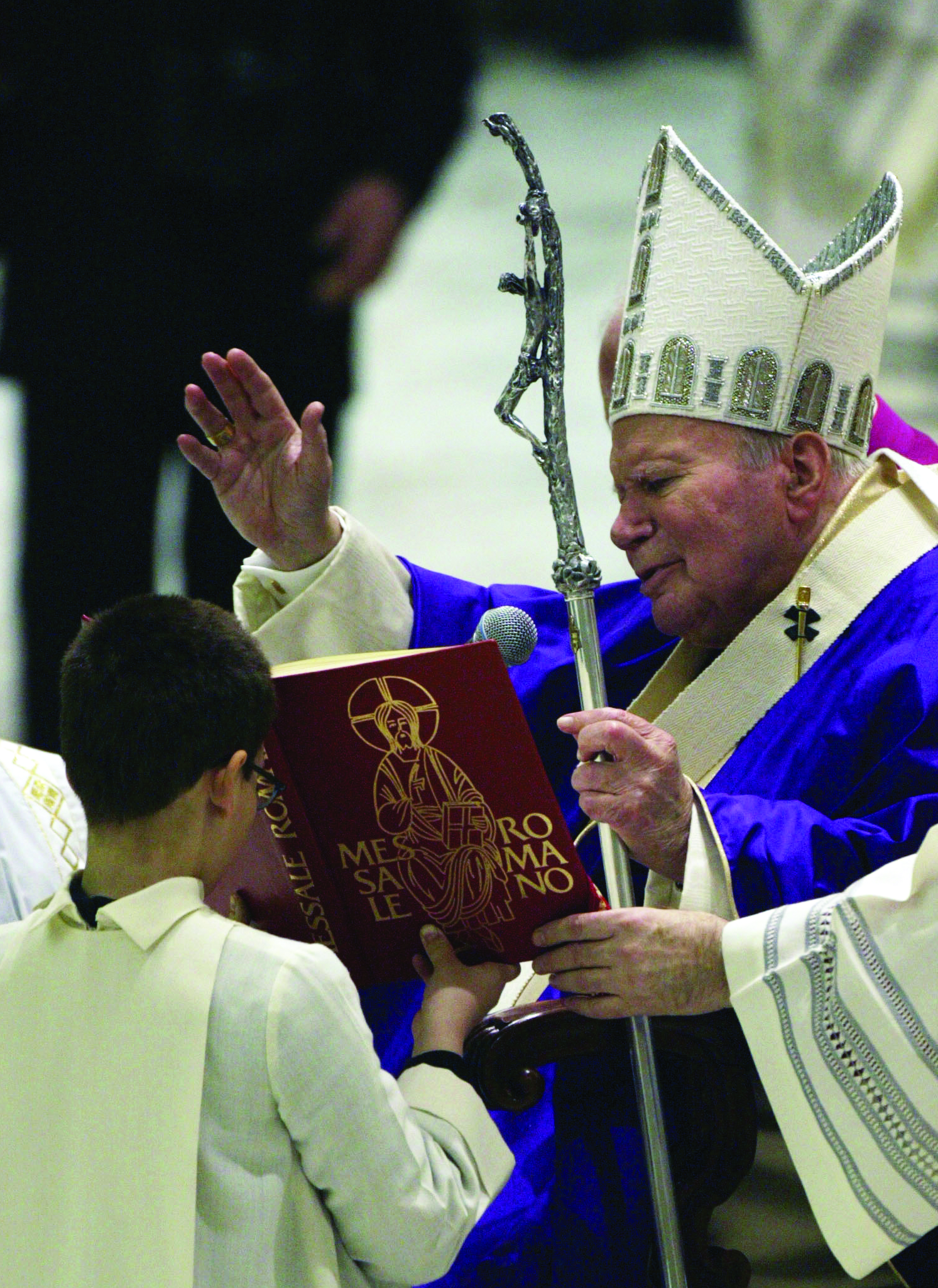
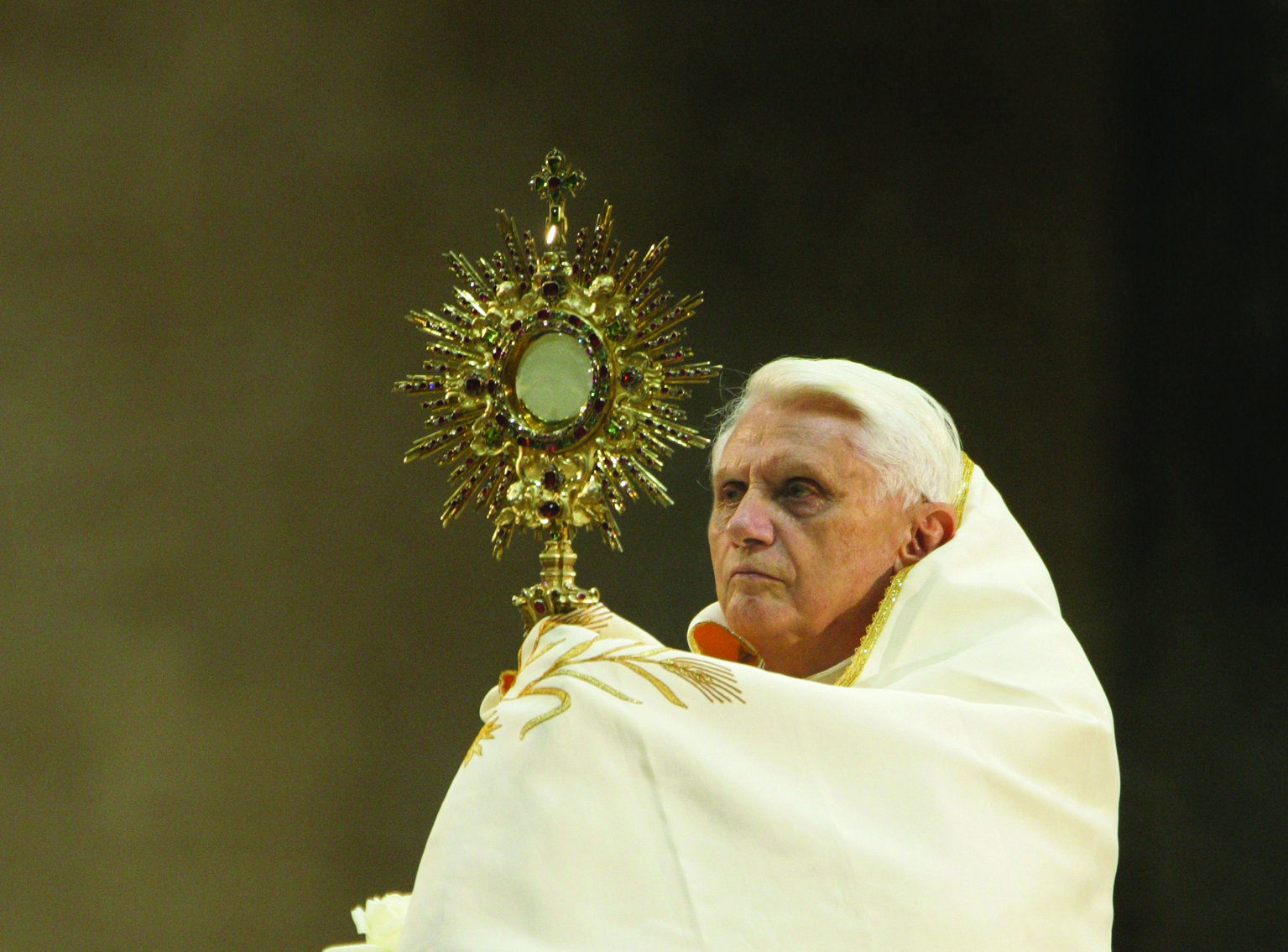
The predecessors of Francis: John XXIII who summoned Vatican II (but also favored studying Latin); Paul VI, who led the Council to its closing; John Paul II who implemented the Council; and Benedict XVI, who sought a compromise solution for the liturgy
Vatican II, a pastoral, rather than doctrinal council, happened — and its goal of representing Cathlic doctrine to the world in terms modern man could understand may or may not have been successful. There are some who argue that there were documents crafted during the Council that were ill-advised, and/or poorly worded. But the word “accept” seems misplaced here; there were no new teachings that required the religious assent of the faithful, no declarations of belief that were not already believed before the Council.
And far from being hotbeds of antiVatican II sentiment, many Traditional Mass communities would only be thrilled to see the actual liturgical directives in the Council documents followed (for example, the Council document Sacrosanctum Concilium, No. 36, gave pride of place to Latin in liturgical celebrations, saying, “Particular law remaining in force, the use of the Latin language is to be preserved in the Latin rites” (§ 1).
The sad fact is, many who became interested in the traditional Mass did so because of abuses that crept into their local liturgical celebrations, (falsely) defended on the basis of “following Vatican II” (or its “spirit”). Pope Francis himself laments these liturgical abuses in his motu proprio. In a letter to the world’s bishops accompanying Traditionis custodes, Pope Francis said that he was “saddened by abuses in the celebration of the liturgy on all sides.”
“In common with Benedict XVI, I deplore the fact that ‘in many places the prescriptions of the new Missal are not observed in celebration, but indeed come to be interpreted as an authorization for or even a requirement of creativity, which leads to almost unbearable distortions,’” the Pope wrote.
Many Catholics are now waiting to see if Pope Francis will attack progressive liturgical abuses — arguably more numerous and more entrenched over the past five decades since Vatican II than any abuses by the minority of traditionally-minded Catholics could ever be — with the same vigor with which he is reprimanding those who choose to attend the Traditional Latin Mass.
In the following pages, we sample some of the reactions to Pope Francis’ Traditionis custodes that have appeared since its July 16, 2021 publication.
“This Missal was never juridically abrogated”
Excerpts from the July 2007 Letter of His Holiness Benedict XVI to the Bishops on the publication of the “Motu Proprio” Summorum Pontificum on the Use of the Roman Liturgy Prior to the Reform of 1970
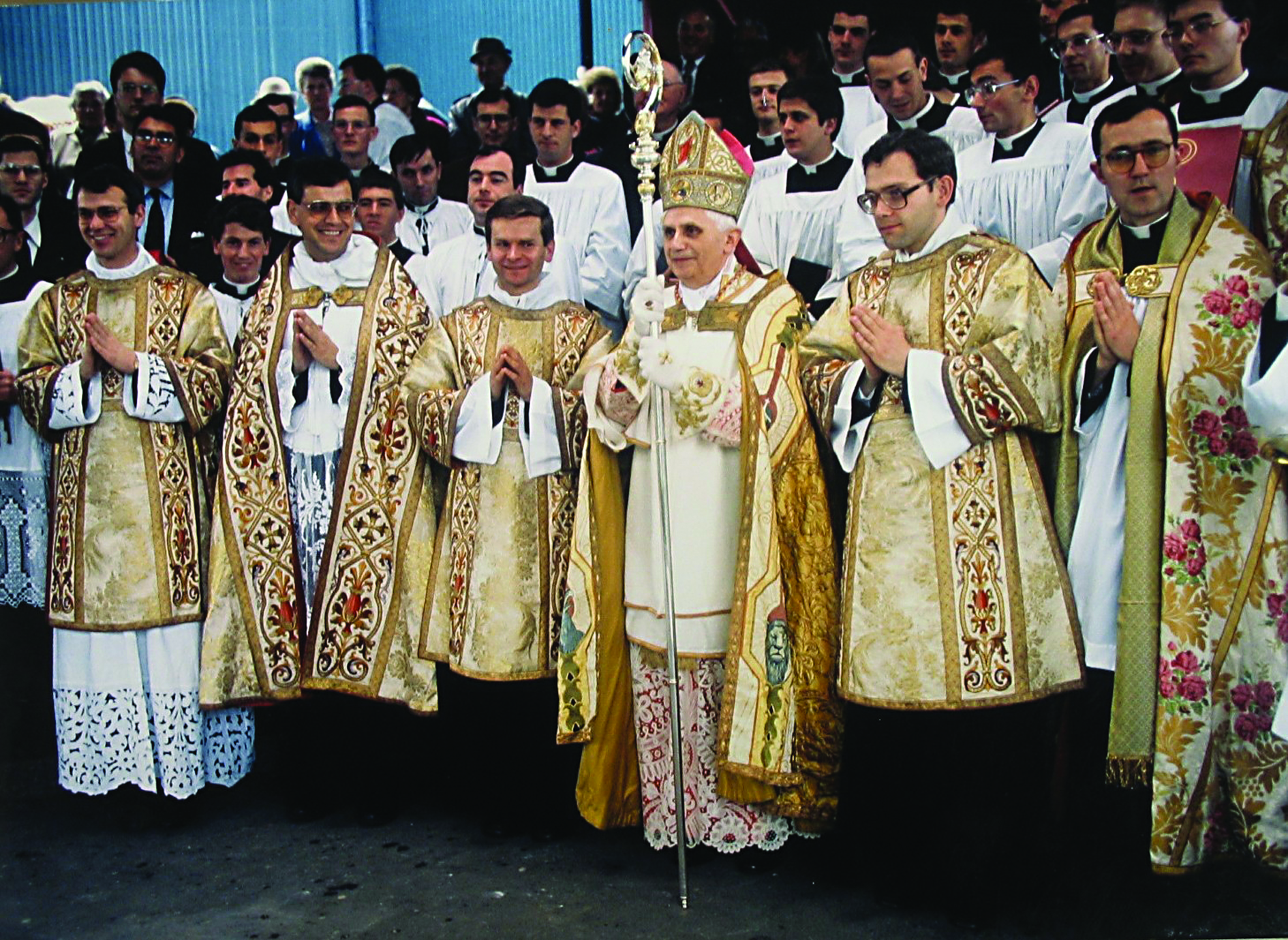
A gathering of traditionalist Catholics with Joseph Ratzinger in Wigratzbad, Bavaria, where the Fraternity of St. Peter’s seminary is located.
With great trust and hope, I am consigning to you as Pastors the text of a new Apostolic Letter “Motu Proprio data” on the use of the Roman liturgy prior to the reform of 1970. The document is the fruit of much reflection, numerous consultations and prayer.
[…]
This document was most directly opposed on account of two fears, which I would like to address somewhat more closely in this letter.
In the first place, there is the fear that the document detracts from the authority of the Second Vatican Council, one of whose essential decisions — the liturgical reform — is being called into question.
This fear is unfounded. In this regard, it must first be said that the Missal published by Paul VI and then republished in two subsequent editions by John Paul II, obviously is and continues to be the normal Form — the Forma ordinaria — of the Eucharistic Liturgy. The last version of the Missale Romanum prior to the Council, which was published with the authority of Pope John XXIII in 1962 and used during the Council, will now be able to be used as a Forma extraordinaria of the liturgical celebration. It is not appropriate to speak of these two versions of the Roman Missal as if they were “two Rites.” Rather, it is a matter of a twofold use of one and the same rite.
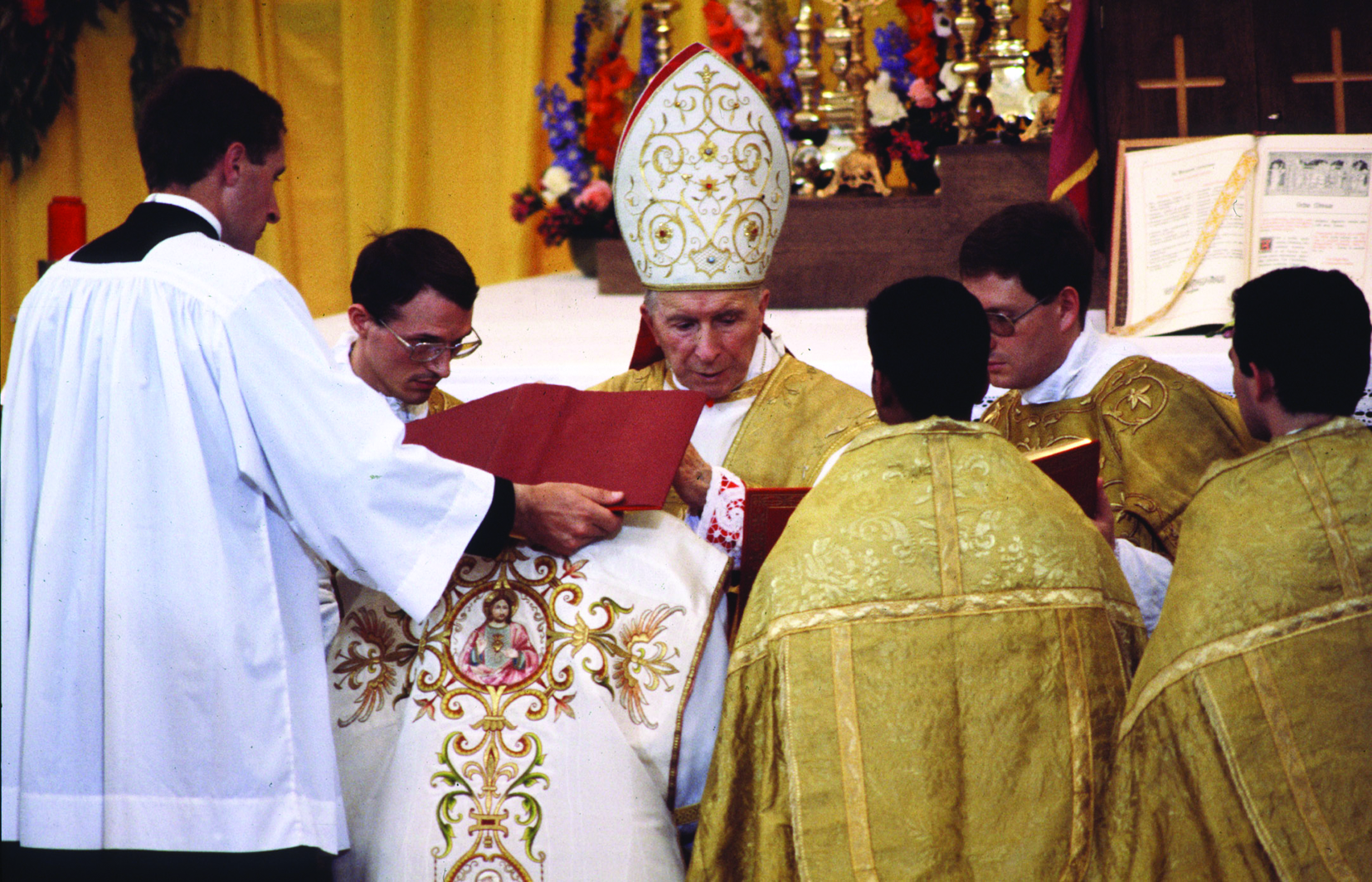
The 1988 episcopal consecrations which Pope John Paul did not approve, but which Archbishop Marcel Lefebvre performed that year, giving additional bishops to his Society of St. Pius X (SSPX)
As for the use of the 1962 Missal as a Forma extraordinaria of the liturgy of the Mass, I would like to draw attention to the fact that this Missal was never juridically abrogated and, consequently, in principle, was always permitted. At the time of the introduction of the new Missal, it did not seem necessary to issue specific norms for the possible use of the earlier Missal. Probably it was thought that it would be a matter of a few individual cases which would be resolved, case by case, on the local level. Afterwards, however, it soon became apparent that a good number of people remained strongly attached to this usage of the Roman Rite, which had been familiar to them from childhood. This was especially the case in countries where the liturgical movement had provided many people with a notable liturgical formation and a deep, personal familiarity with the earlier Form of the liturgical celebration. We all know that, in the movement led by Archbishop Lefebvre, fidelity to the old Missal became an external mark of identity; the reasons for the break which arose over this, however, were at a deeper level. Many people who clearly accepted the binding character of the Second Vatican Council, and were faithful to the Pope and the Bishops, nonetheless also desired to recover the form of the sacred liturgy that was dear to them. This occurred above all because in many places celebrations were not faithful to the prescriptions of the new Missal, but the latter actually was understood as authorizing or even requiring creativity, which frequently led to deformations of the liturgy which were hard to bear…
[…]
I now come to the positive reason which motivated my decision to issue this Motu Proprio updating that of 1988. It is a matter of coming to an interior reconciliation in the heart of the Church. Looking back over the past, to the divisions which in the course of the centuries have rent the Body of Christ, one continually has the impression that, at critical moments when divisions were coming about, not enough was done by the Church’s leaders to maintain or regain reconciliation and unity. One has the impression that omissions on the part of the Church have had their share of blame for the fact that these divisions were able to harden. This glance at the past imposes an obligation on us today: to make every effort to enable for all those who truly desire unity to remain in that unity or to attain it anew. I think of a sentence in the Second Letter to the Corinthians, where Paul writes: “Our mouth is open to you, Corinthians; our heart is wide. You are not restricted by us, but you are restricted in your own affections. In return … widen your hearts also!” (2 Cor 6:11-13)… Let us generously open our hearts and make room for everything that the faith itself allows.
There is no contradiction between the two editions of the Roman Missal. In the history of the liturgy there is growth and progress, but no rupture. What earlier generations held as sacred, remains sacred and great for us too, and it cannot be all of a sudden entirely forbidden or even considered harmful. It behooves all of us to preserve the riches which have developed in the Church’s faith and prayer, and to give them their proper place. Needless to say, in order to experience full communion, the priests of the communities adhering to the former usage cannot, as a matter of principle, exclude celebrating according to the new books. The total exclusion of the new rite would not in fact be consistent with the recognition of its value and holiness.
In conclusion, dear Brothers, I very much wish to stress that these new norms do not in any way lessen your own authority and responsibility, either for the liturgy or for the pastoral care of your faithful. Each Bishop, in fact, is the moderator of the liturgy in his own Diocese (cf. Sacrosanctum Concilium, 22: “Sacrae Liturgiae moderatio ab Ecclesiae auctoritate unice pendet quae quidem est apud Apostolicam Sedem et, ad normam iuris, apud Episcopum”).
[…]
We reproduce here the first three articles which put forth the main instructions of Benedict’s 2007 motu proprio on the celebration of the Traditional Mass, which he here calls the Extraordinary Rite. The document contains 12 articles and 8 sub-articles in all.
Art 1. The Roman Missal promulgated by Pope Paul VI is the ordinary expression of the lex orandi (rule of prayer) of the Catholic Church of the Latin rite. The Roman Missal promulgated by Saint Pius V and revised by Blessed John XXIII is nonetheless to be considered an extraordinary expression of the same lex orandi of the Church and duly honoured for its venerable and ancient usage. These two expressions of the Church’s lex orandi will in no way lead to a division in the Church’s lex credendi (rule of faith); for they are two usages of the one Roman rite.
It is therefore permitted to celebrate the Sacrifice of the Mass following the typical edition of the Roman Missal, which was promulgated by Blessed John XXIII in 1962 and never abrogated, as an extraordinary form of the Church’s Liturgy. The conditions for the use of this Missal laid down by the previous documents Quattuor Abhinc Annos and Ecclesia Dei are now replaced as follows:
Art. 2. In Masses celebrated without a congregation, any Catholic priest of the Latin rite, whether secular or regular, may use either the Roman Missal published in 1962 by Blessed Pope John XXIII or the Roman Missal promulgated in 1970 by Pope Paul VI, and may do so on any day, with the exception of the Easter Triduum. For such a celebration with either Missal, the priest needs no permission from the Apostolic See or from his own Ordinary.
Art. 3. If communities of Institutes of Consecrated Life and Societies of Apostolic Life, whether of pontifical or diocesan right, wish to celebrate the conventual or community Mass in their own oratories according to the 1962 edition of the Roman Missal, they are permitted to do so.
[…]
Traditionis Custodes
Apostolistic letter issued “moto proprio” by the Supreme Pontiff Francis
On the Use of the Roman Liturgy Prior to the Reform of 1970

Opposite, Francis during a celebration in the Sistine Chapel.
Guardians of the tradition, the bishops in communion with the Bishop of Rome constitute the visible principle and foundation of the unity of their particular Churches. Under the guidance of the Holy Spirit, through the proclamation of the Gospel and by means of the celebration of the Eucharist, they govern the particular Churches entrusted to them.
In order to promote the concord and unity of the Church, with paternal solicitude towards those who in any region adhere to liturgical forms antecedent to the reform willed by the Vatican Council II, my Venerable Predecessors, Saint John Paul II and Benedict XVI, granted and regulated the faculty to use the Roman Missal edited by John XXIII in 1962. In this way they intended “to facilitate the ecclesial communion of those Catholics who feel attached to some earlier liturgical forms” and not to others.
In line with the initiative of my Venerable Predecessor Benedict XVI to invite the bishops to assess the application of the Motu Proprio Summorum Pontificum three years after its publication, the Congregation for the Doctrine of the Faith carried out a detailed consultation of the bishops in 2020. The results have been carefully considered in the light of experience that has matured during these years.
At this time, having considered the wishes expressed by the episcopate and having heard the opinion of the Congregation for the Doctrine of the Faith, I now desire, with this Apostolic Letter, to press on ever more in the constant search for ecclesial communion. Therefore, I have considered it appropriate to establish the following:
Art. 1. The liturgical books promulgated by Saint Paul VI and Saint John Paul II, in conformity with the decrees of Vatican Council II, are the unique expression of the lex orandi of the Roman Rite.
Art. 2. It belongs to the diocesan bishop, as moderator, promoter, and guardian of the whole liturgical life of the particular Church entrusted to him, to regulate the liturgical celebrations of his diocese. Therefore, it is his exclusive competence to authorize the use of the 1962 Roman Missal in his diocese, according to the guidelines of the Apostolic See.
Art. 3. The bishop of the diocese in which until now there exist one or more groups that celebrate according to the Missal antecedent to the reform of 1970:
§ 1. is to determine that these groups do not deny the validity and the legitimacy of the liturgical reform, dictated by Vatican Council II and the Magisterium of the Supreme Pontiffs;
§ 2. is to designate one or more locations where the faithful adherents of these groups may gather for the eucharistic celebration (not however in the parochial churches and without the erection of new personal parishes);
§ 3. to establish at the designated locations the days on which eucharistic celebrations are permitted using the Roman Missal promulgated by Saint John XXIII in 1962. In these celebrations the readings are proclaimed in the vernacular language, using translations of the Sacred Scripture approved for liturgical use by the respective Episcopal Conferences;
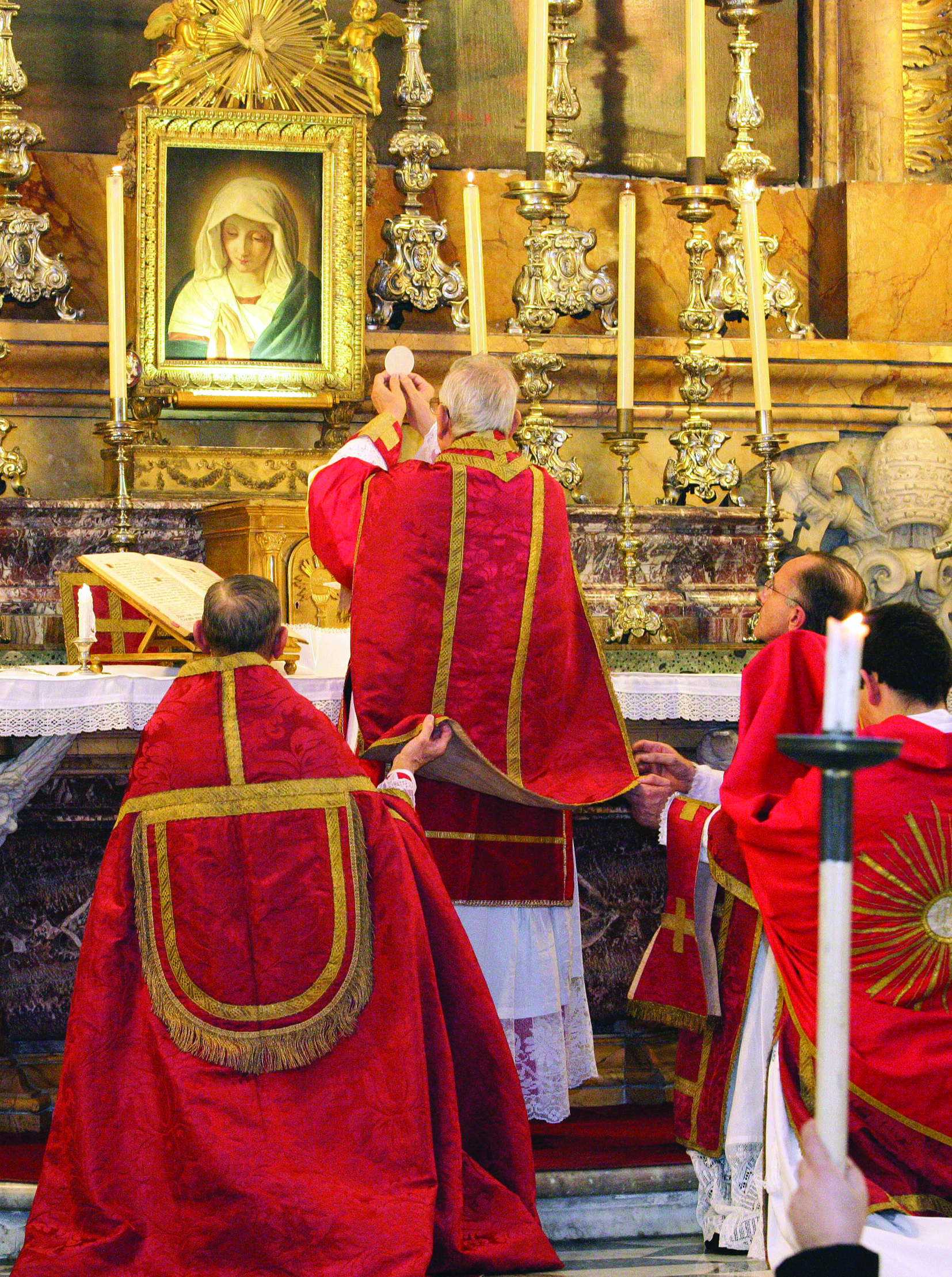
November 22, 2007, in the Church of Sant’Ivo alla Sapienza in Rome, the late Cardinal Dario Castrillon Hoyos, then-Prefect of the Congregation for the Clergy, celebrates Mass in the old Roman rite for the Feast of St. Cecilia
§ 4. to appoint a priest who, as delegate of the bishop, is entrusted with these celebrations and with the pastoral care of these groups of the faithful. This priest should be suited for this responsibility, skilled in the use of the Missale Romanum antecedent to the reform of 1970, possess a knowledge of the Latin language sufficient for a thorough comprehension of the rubrics and liturgical texts, and be animated by a lively pastoral charity and by a sense of ecclesial communion. This priest should have at heart not only the correct celebration of the liturgy, but also the pastoral and spiritual care of the faithful;
§ 5. to proceed suitably to verify that the parishes canonically erected for the benefit of these faithful are effective for their spiritual growth, and to determine whether or not to retain them;
§ 6. to take care not to authorize the establishment of new groups.
Art. 4. Priests ordained after the publication of the present Motu Proprio, who wish to celebrate using the Missale Romanum of 1962, should submit a formal request to the diocesan Bishop who shall consult the Apostolic See before granting this authorization.
Art. 5. Priests who already celebrate according to the Missale Romanum of 1962 should request from the diocesan Bishop the authorization to continue to enjoy this faculty.
Art. 6. Institutes of consecrated life and Societies of apostolic life, erected by the Pontifical Commission Ecclesia Dei, fall under the competence of the Congregation for Institutes of Consecrated Life and Societies for Apostolic Life.
Art. 7. The Congregation for Divine Worship and the Discipline of the Sacraments and the Congregation for Institutes of Consecrated Life and Societies of Apostolic Life, for matters of their particular competence, exercise the authority of the Holy See with respect to the observance of these provisions.
Art. 8. Previous norms, instructions, permissions, and customs that do not conform to the provisions of the present Motu Proprio are abrogated.
Everything that I have declared in this Apostolic Letter in the form of Motu Proprio, I order to be observed in all its parts, anything else to the contrary notwithstanding, even if worthy of particular mention, and I establish that it be promulgated by way of publication in L’Osservatore Romano, entering immediately in force and, subsequently, that it be published in the official Commentary of the Holy See, Acta Apostolicae Sedis.
Given at Rome, at Saint John Lateran, on 16 July 2021, the liturgical Memorial of Our Lady of Mount Carmel, in the ninth year of Our Pontificate.
FRANCIS
Copyright © Dicastero per la Comunicazione Libreria Editrice Vaticana
Letter of the Holy Father Francis to the Bishops of the whole world, accompanying the Apostolic letter motu proprio data traditionis custodes
Rome, 16 July 2021
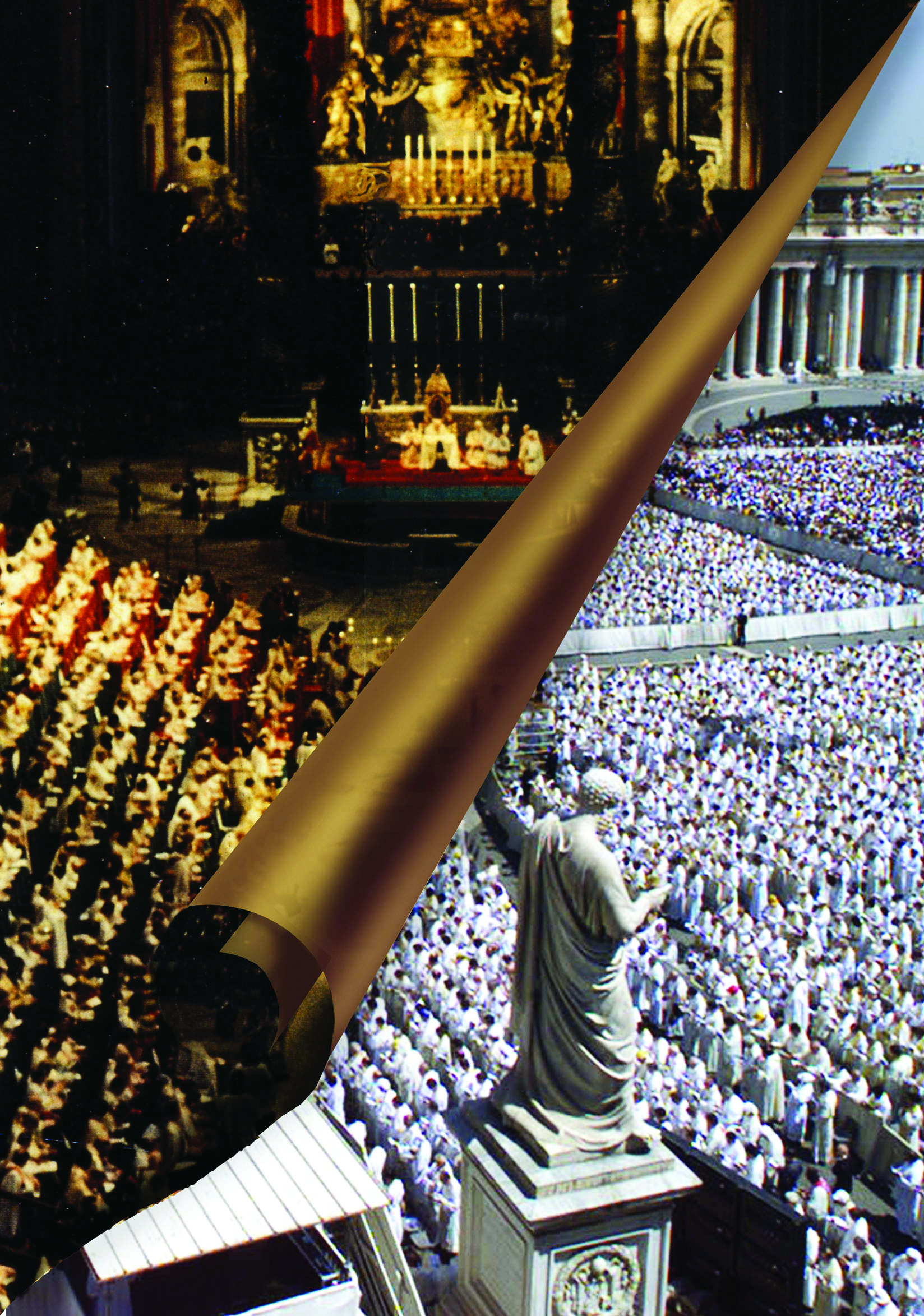
“I am nonetheless saddened that the instrumental use of the Missale Romanum of 1962 is often characterized by a rejection not only of the liturgical reform, but of Vatican Council II itself”
DEAR BROTHERS IN THE EPISCOPATE,
Just as my Predecessor Benedict XVI did with Summorum Pontificum, I wish to accompany the Motu proprio Traditionis custodes with a letter explaining the motives that prompted my decision. I turn to you with trust and parresia, in the name of that shared “solicitude for the whole Church, that contributes supremely to the good of the Universal Church” as Vatican Council II reminds us.
Most people understand the motives that prompted St. John Paul II and Benedict XVI to allow the use of the Roman Missal, promulgated by St. Pius V and edited by St. John XXIII in 1962, for the Eucharistic Sacrifice. The faculty — granted by the indult of the Congregation for Divine Worship in 1984 and confirmed by St. John Paul II in the Motu Proprio Ecclesia Dei in 1988 — was above all motivated by the desire to foster the healing of the schism with the movement of Mons. Lefebvre. With the ecclesial intention of restoring the unity of the Church, the Bishops were thus asked to accept with generosity the “just aspirations” of the faithful who requested the use of that Missal.
Many in the Church came to regard this faculty as an opportunity to adopt freely the Roman Missal promulgated by St. Pius V and use it in a manner parallel to the Roman Missal promulgated by St. Paul VI. In order to regulate this situation at the distance of many years, Benedict XVI intervened to address this state of affairs in the Church. Many priests and communities had “used with gratitude the possibility offered by the Motu proprio” of St. John Paul II. Underscoring that this development was not foreseeable in 1988, the Motu proprio Summorum Pontificum of 2007 intended to introduce “a clearer juridical regulation” in this area. In order to allow access to those, including young people, who when “they discover this liturgical form, feel attracted to it and find in it a form, particularly suited to them, to encounter the mystery of the most holy Eucharist,” Benedict XVI declared “the Missal promulgated by St. Pius V and newly edited by Blessed John XXIII, as an extraordinary expression of the same lex orandi,” granting a “more ample possibility for the use of the 1962 Missal.”
In making their decision they were confident that such a provision would not place in doubt one of the key measures of Vatican Council II or minimize in this way its authority: the Motu proprio recognized that, in its own right, “the Missal promulgated by Paul VI is the ordinary expression of the lex orandi of the Catholic Church of the Latin rite.” The recognition of the Missal promulgated by St. Pius V “as an extraordinary expression of the same lex orandi” did not in any way underrate the liturgical reform, but was decreed with the desire to acknowledge the “insistent prayers of these faithful,” allowing them “to celebrate the Sacrifice of the Mass according to the editio typica of the Roman Missal promulgated by Blessed John XXIII in 1962 and never abrogated, as the extraordinary form of the Liturgy of the Church.” It comforted Benedict XVI in his discernment that many desired “to find the form of the sacred Liturgy dear to them,” “clearly accepted the binding character of Vatican Council II and were faithful to the Pope and to the Bishops.” What is more, he declared to be unfounded the fear of division in parish communities, because “the two forms of the use of the Roman Rite would enrich one another.” Thus, he invited the Bishops to set aside their doubts and fears, and to welcome the norms, “attentive that everything would proceed in peace and serenity,” with the promise that “it would be possible to find resolutions” in the event that “serious difficulties came to light” in the implementation of the norms “once the Motu proprio came into effect”.
With the passage of thirteen years, I instructed the Congregation for the Doctrine of the Faith to circulate a questionnaire to the Bishops regarding the implementation of the Motu proprio Summorum Pontificum. The responses reveal a situation that preoccupies and saddens me, and persuades me of the need to intervene. Regrettably, the pastoral objective of my Predecessors, who had intended “to do everything possible to ensure that all those who truly possessed the desire for unity would find it possible to remain in this unity or to rediscover it anew”, has often been seriously disregarded. An opportunity offered by St. John Paul II and, with even greater magnanimity, by Benedict XVI, intended to recover the unity of an ecclesial body with diverse liturgical sensibilities, was exploited to widen the gaps, reinforce the divergences, and encourage disagreements that injure the Church, block her path, and expose her to the peril of division.
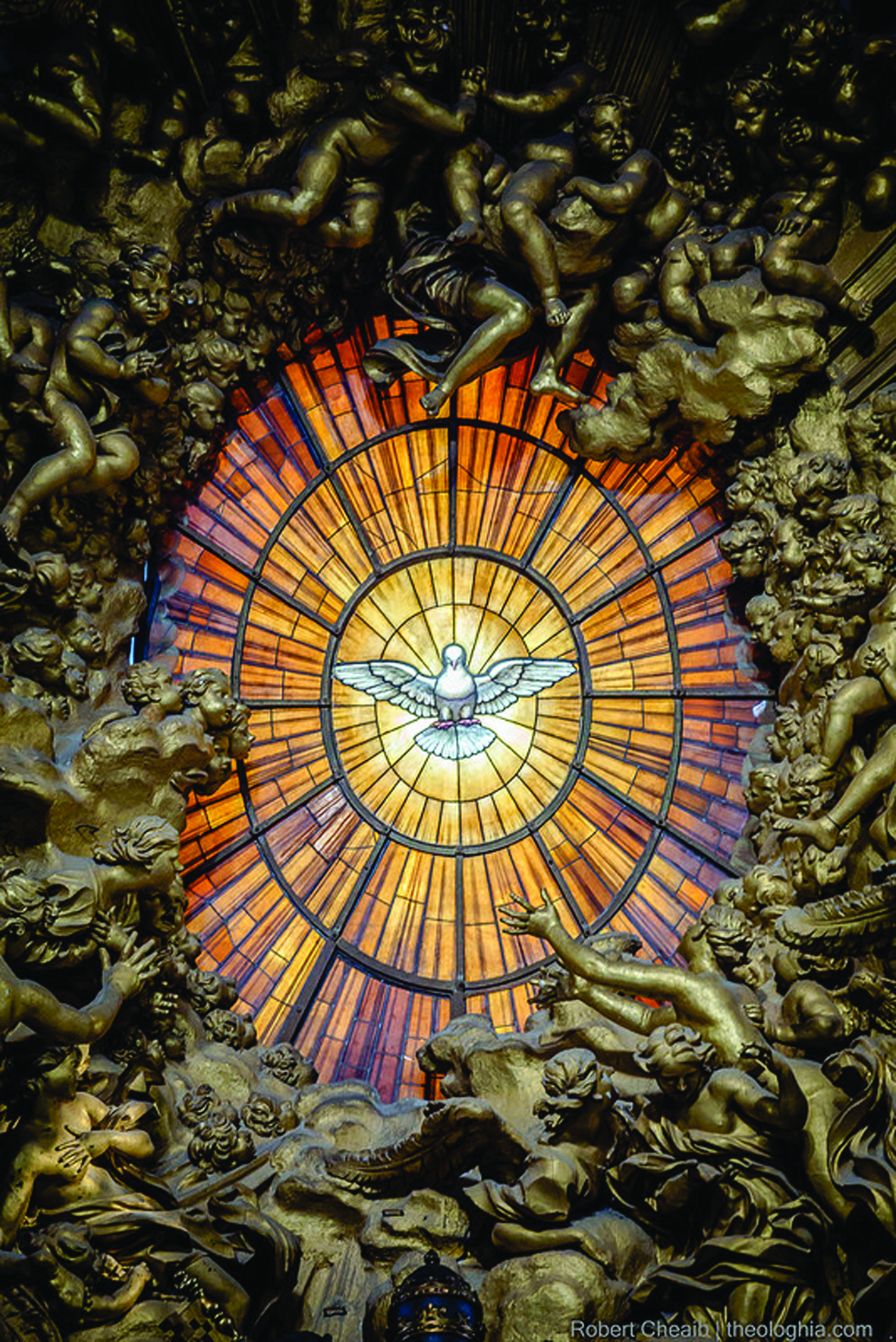
“The path of the Church must be seen within the dynamic of Tradition which originates from the Apostles and progresses in the Church with the assistance of the Holy Spirit”
At the same time, I am saddened by abuses in the celebration of the liturgy on all sides. In common with Benedict XVI, I deplore the fact that “in many places the prescriptions of the new Missal are not observed in celebration, but indeed come to be interpreted as an authorization for or even a requirement of creativity, which leads to almost unbearable distortions”. But I am nonetheless saddened that the instrumental use of Missale Romanum of 1962 is often characterized by a rejection not only of the liturgical reform, but of the Vatican Council II itself, claiming, with unfounded and unsustainable assertions, that it betrayed the Tradition and the “true Church”. The path of the Church must be seen within the dynamic of Tradition “which originates from the Apostles and progresses in the Church with the assistance of the Holy Spirit” (DV 8). A recent stage of this dynamic was constituted by Vatican Council II where the Catholic episcopate came together to listen and to discern the path for the Church indicated by the Holy Spirit. To doubt the Council is to doubt the intentions of those very Fathers who exercised their collegial power in a solemn manner cum Petro et sub Petro in an ecumenical council, and, in the final analysis, to doubt the Holy Spirit himself who guides the Church.
The objective of the modification of the permission granted by my Predecessors is highlighted by the Second Vatican Council itself. From the vota submitted by the Bishops there emerged a great insistence on the full, conscious and active participation of the whole People of God in the liturgy, along lines already indicated by Pius XII in the encyclical Mediator Dei on the renewal of the liturgy.] The constitution Sacrosanctum Concilium confirmed this appeal, by seeking “the renewal and advancement of the liturgy”, and by indicating the principles that should guide the reform. In particular, it established that these principles concerned the Roman Rite, and other legitimate rites where applicable, and asked that “the rites be revised carefully in the light of sound tradition, and that they be given new vigor to meet present-day circumstances and needs”. On the basis of these principles a reform of the liturgy was undertaken, with its highest expression in the Roman Missal, published in editio typica by St. Paul VI and revised by St. John Paul II. It must therefore be maintained that the Roman Rite, adapted many times over the course of the centuries according to the needs of the day, not only be preserved but renewed “in faithful observance of the Tradition”. Whoever wishes to celebrate with devotion according to earlier forms of the liturgy can find in the reformed Roman Missal according to Vatican Council II all the elements of the Roman Rite, in particular the Roman Canon which constitutes one of its more distinctive elements.
A final reason for my decision is this: ever more plain in the words and attitudes of many is the close connection between the choice of celebrations according to the liturgical books prior to Vatican Council II and the rejection of the Church and her institutions in the name of what is called the “true Church.” One is dealing here with comportment that contradicts communion and nurtures the divisive tendency — “I belong to Paul; I belong instead to Apollo; I belong to Cephas; I belong to Christ” — against which the Apostle Paul so vigorously reacted. In defense of the unity of the Body of Christ, I am constrained to revoke the faculty granted by my Predecessors. The distorted use that has been made of this faculty is contrary to the intentions that led to granting the freedom to celebrate the Mass with the Missale Romanum of 1962. Because “liturgical celebrations are not private actions, but celebrations of the Church, which is the sacrament of unity”, they must be carried out in communion with the Church. Vatican Council II, while it reaffirmed the external bonds of incorporation in the Church — the profession of faith, the sacraments, of communion — affirmed with St. Augustine that to remain in the Church not only “with the body” but also “with the heart” is a condition for salvation.
Dear brothers in the Episcopate, Sacrosanctum Concilium explained that the Church, the “sacrament of unity,” is such because it is “the holy People gathered and governed under the authority of the Bishops”. Lumen gentium, while recalling that the Bishop of Rome is “the permanent and visible principle and foundation of the unity both of the bishops and of the multitude of the faithful,” states that you the Bishops are “the visible principle and foundation of the unity of your local Churches, in which and through which exists the one and only Catholic Church”.
Responding to your requests, I take the firm decision to abrogate all the norms, instructions, permissions and customs that precede the present Motu proprio, and declare that the liturgical books promulgated by the saintly Pontiffs Paul VI and John Paul II, in conformity with the decrees of Vatican Council II, constitute the unique expression of the lex orandi of the Roman Rite. I take comfort in this decision from the fact that, after the Council of Trent, St. Pius V also abrogated all the rites that could not claim a proven antiquity, establishing for the whole Latin Church a single Missale Romanum. For four centuries this Missale Romanum, promulgated by St. Pius V was thus the principal expression of the lex orandi of the Roman Rite, and functioned to maintain the unity of the Church. Without denying the dignity and grandeur of this Rite, the Bishops gathered in ecumenical council asked that it be reformed; their intention was that “the faithful would not assist as strangers and silent spectators in the mystery of faith, but, with a full understanding of the rites and prayers, would participate in the sacred action consciously, piously, and actively”. St. Paul VI, recalling that the work of adaptation of the Roman Missal had already been initiated by Pius XII, declared that the revision of the Roman Missal, carried out in the light of ancient liturgical sources, had the goal of permitting the Church to raise up, in the variety of languages, “a single and identical prayer,” that expressed her unity. This unity I intend to re-establish throughout the Church of the Roman Rite.
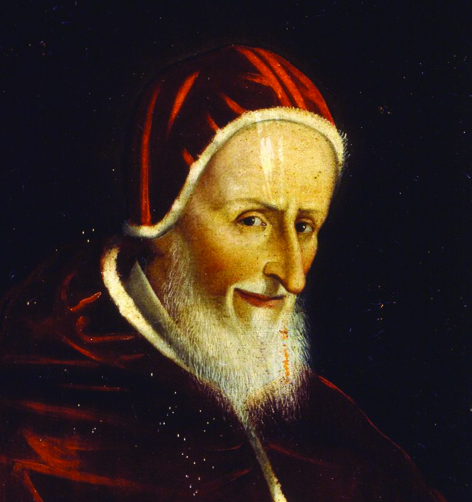
A portrait of Pius V, and The Opening of the Council of Trent (1711), by Niccolò Dorigatti
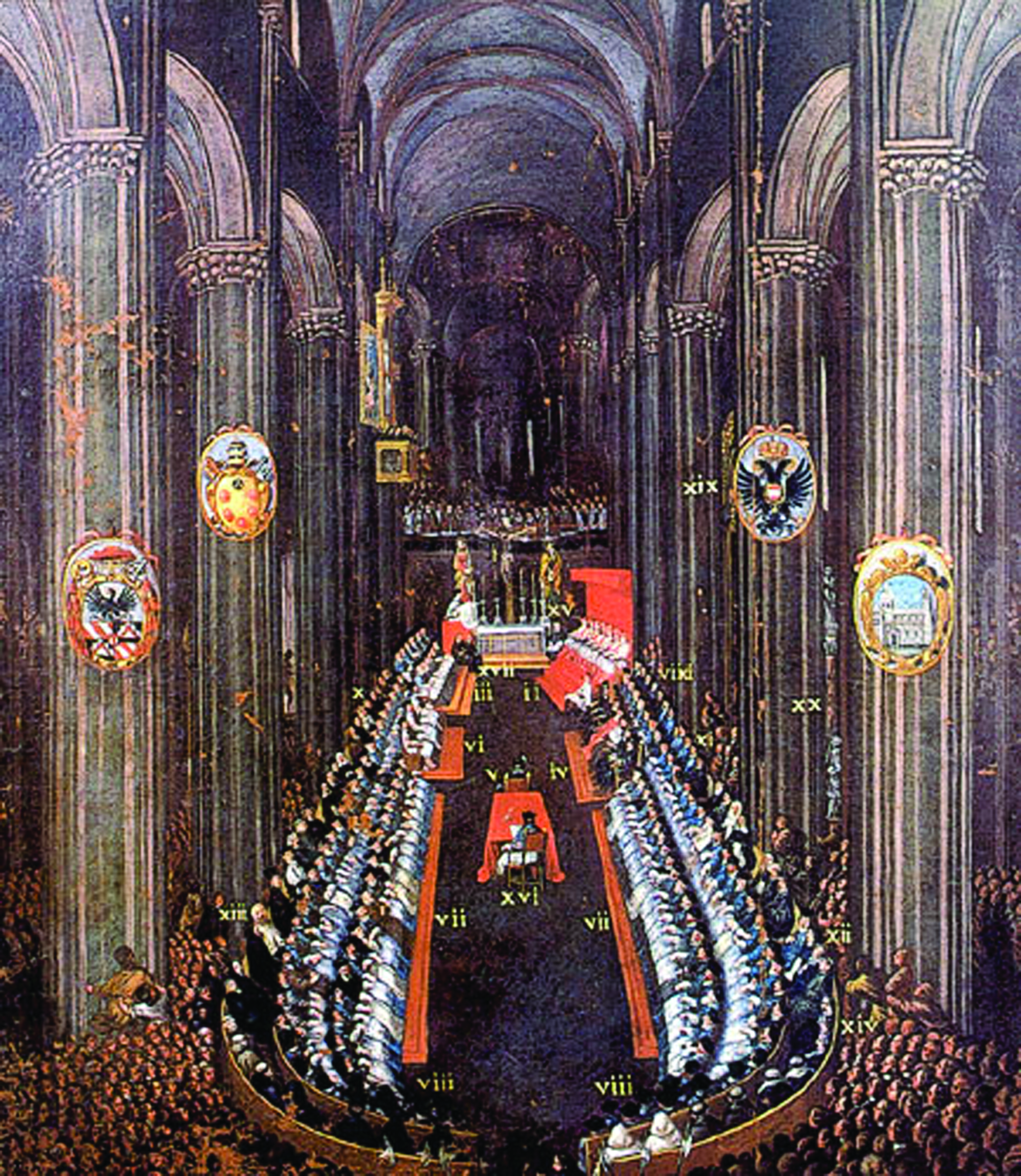
“I take comfort in this decision from the fact that, after the Council of Trent, St. Pius V also abrogated all the rites taht could not claim a proven antiquity, establishing for the whole Latin Church a single Missale Romanum“
Vatican Council II, when it described the catholicity of the People of God, recalled that “within the ecclesial communion” there exist the particular Churches which enjoy their proper traditions, without prejudice to the primacy of the Chair of Peter who presides over the universal communion of charity, guarantees the legitimate diversity and together ensures that the particular not only does not injure the universal but above all serves it”. While, in the exercise of my ministry in service of unity, I take the decision to suspend the faculty granted by my Predecessors, I ask you to share with me this burden as a form of participation in the solicitude for the whole Church proper to the Bishops. In the Motu proprio I have desired to affirm that it is up to the Bishop, as moderator, promoter, and guardian of the liturgical life of the Church of which he is the principle of unity, to regulate the liturgical celebrations. It is up to you to authorize in your Churches, as local Ordinaries, the use of the Missale Romanum of 1962, applying the norms of the present Motu proprio. It is up to you to proceed in such a way as to return to a unitary form of celebration, and to determine case by case the reality of the groups which celebrate with this Missale Romanum.
Indications about how to proceed in your dioceses are chiefly dictated by two principles: on the one hand, to provide for the good of those who are rooted in the previous form of celebration and need to return in due time to the Roman Rite promulgated by Saints Paul VI and John Paul II, and, on the other hand, to discontinue the erection of new personal parishes tied more to the desire and wishes of individual priests than to the real need of the “holy People of God.” At the same time, I ask you to be vigilant in ensuring that every liturgy be celebrated with decorum and fidelity to the liturgical books promulgated after Vatican Council II, without the eccentricities that can easily degenerate into abuses. Seminarians and new priests should be formed in the faithful observance of the prescriptions of the Missal and liturgical books, in which is reflected the liturgical reform willed by Vatican Council II.
Upon you I invoke the Spirit of the risen Lord, that he may make you strong and firm in your service to the People of God entrusted to you by the Lord, so that your care and vigilance express communion even in the unity of one, single Rite, in which is preserved the great richness of the Roman liturgical tradition. I pray for you. You pray for me.
Hitting the sheep hard with the shepherd’s crook
By Cardinal Gerhard Müller, former Prefect of the Congregation for the Doctrine of the Faith
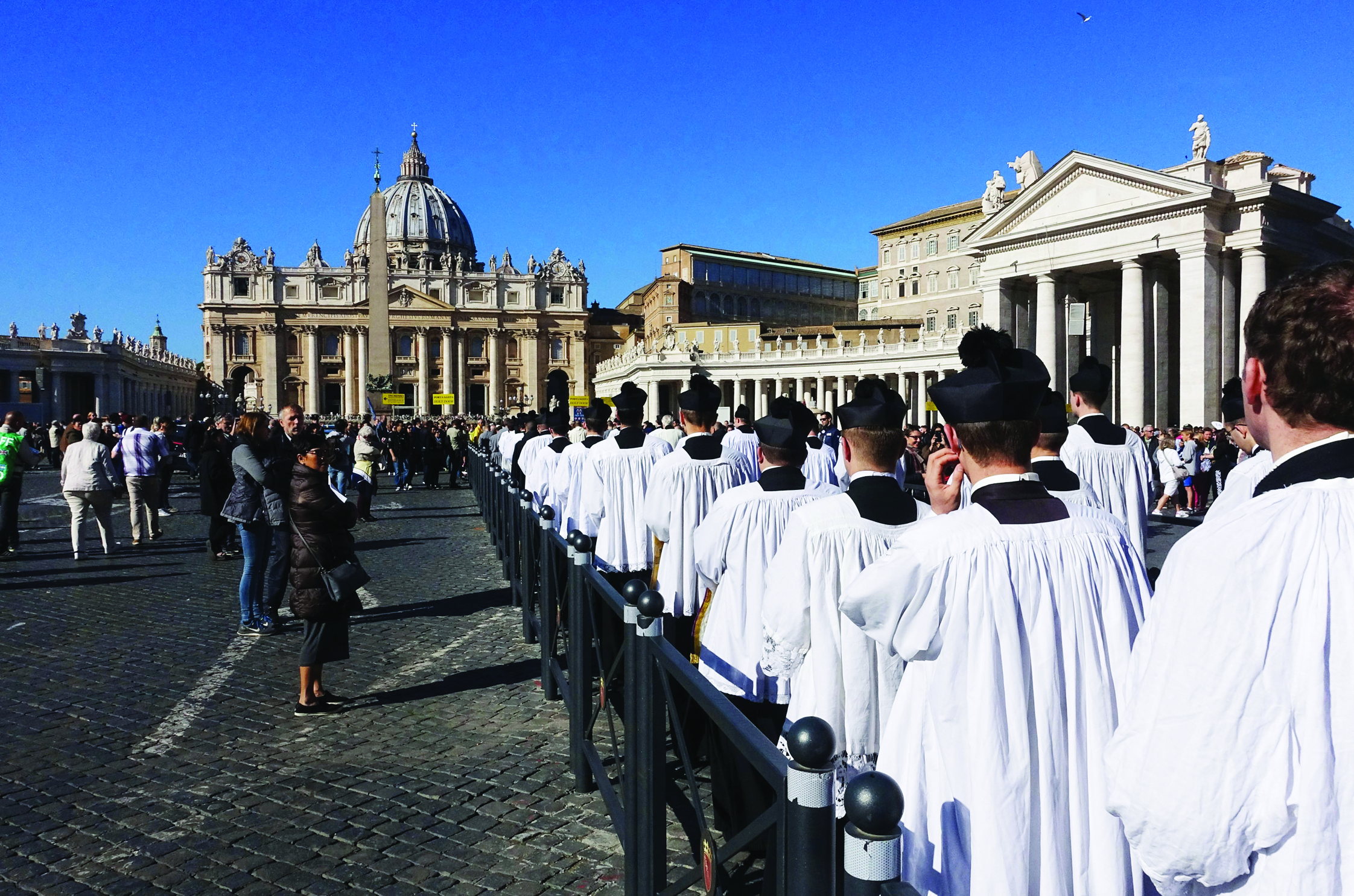
October 29, 2016 — Rome, Italy. Solemn procession in Via della Conciliazione with many young seminarians toward the Holy Soor of the Basilica of St. Peter. The pilgrimage was organized by Coetus Internationalis Summorum Pontificum which is an umbrella group of traditionalist Catholics organizations
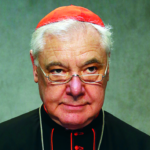 The pope’s intention with his motu proprio, Traditionis Custodes, is to secure or restore the unity of the Church. The proposed means for this is the total unification of the Roman Rite in the form of the Missal of Paul VI (including its subsequent variations). Therefore, the celebration of Mass in the Extraordinary Form of the Roman Rite, as introduced by Pope Benedict XVI with Summorum pontificum (2007) on the basis of the Missal that existed from Pius V (1570) to John XXIII (1962), has been drastically restricted. The clear intent is to condemn the Extraordinary Form to extinction in the long run.
The pope’s intention with his motu proprio, Traditionis Custodes, is to secure or restore the unity of the Church. The proposed means for this is the total unification of the Roman Rite in the form of the Missal of Paul VI (including its subsequent variations). Therefore, the celebration of Mass in the Extraordinary Form of the Roman Rite, as introduced by Pope Benedict XVI with Summorum pontificum (2007) on the basis of the Missal that existed from Pius V (1570) to John XXIII (1962), has been drastically restricted. The clear intent is to condemn the Extraordinary Form to extinction in the long run.
In his “Letter to the Bishops of the Whole World,” which accompanies the motu proprio, Pope Francis tries to explain the motives that have caused him, as the bearer of the supreme authority of the Church, to limit the liturgy in the extraordinary form. Beyond the presentation of his subjective reactions, however, a stringent and logically comprehensible theological argumentation would also have been appropriate. For papal authority does not consist in superficially demanding from the faithful mere obedience, i.e., a formal submission of the will, but, much more essentially, in enabling the faithful also to be convinced with consent of the mind.
[…] As welcome as the references to Vatican II may be, care must be taken to ensure that the Council’s statements are used precisely and in context. The quotation from St. Augustine about membership in the Church “according to the body” and “according to the heart” (Lumen Gentium 14) refers to the full Church membership of the Catholic faith. It consists in the visible incorporation into the body of Christ (creedal, sacramental, ecclesiastical-hierarchical communion) as well as in the union of the heart, i.e. in the Holy Spirit. What this means, however, is not obedience to the pope and the bishops in the discipline of the sacraments, but sanctifying grace, which fully involves us in the invisible Church as communion with the Triune God.
For the unity in the confession of the revealed faith and the celebration of the mysteries of grace in the seven sacraments by no means requires sterile uniformity in the external liturgical form, as if the Church were like one of the international hotel chains with their homogenous design. The unity of believers with one another is rooted in unity in God through faith, hope, and love and has nothing to do with uniformity in appearance, the lockstep of a military formation, or the groupthink of the big-tech age.
[…]
The key to a Catholic understanding of the liturgy lies in the insight that the substance of the sacraments is given to the Church as a visible sign and means of the invisible grace by virtue of divine law, but that it is up to the Apostolic See and, in accordance with the law, to the bishops to order the external form of the liturgy (insofar as it has not already existed since apostolic times). (Sacrosanctum Concilium, 22 § 1)
The provisions of Traditionis Custodes are of a disciplinary, not dogmatic nature and can be modified again by any future Pope. Naturally, the Pope, in his concern for the unity of the Church in the revealed faith, is to be fully supported when the celebration of Holy Mass according to the Missal of 1962 is an expression of resistance to the authority of Vatican II, which is to say, when the doctrine of the faith and the Church’s ethics are relativized or even denied in the liturgical and pastoral order.
[…]
In Traditionis Custodes, the pope rightly insists on the unconditional recognition of Vatican II. Nobody can call himself a Catholic who either wants to go back behind Vatican II (or any other council recognized by the pope) as the time of the “true” Church or wants to leave that Church behind as an intermediate step towards a “new Church.” One may measure Pope Francis’ will to return to unity the deplored so-called “traditionalists” (i.e., those opposed to the Missal of Paul VI) against the degree of his determination to put an end to the innumerable “progressivist” abuses of the liturgy (renewed in accordance with Vatican II) that are tantamount to blasphemy. […]
[…]
The teachings of Vatican II on the uniqueness of redemption in Christ, the full realization of the Church of Christ in the Catholic Church, the inner essence of the Catholic liturgy as adoration of God and mediation of grace, Revelation and its presence in Scripture and Apostolic Tradition, the infallibility of the magisterium, the primacy of the pope, the sacramentality of the Church, the dignity of the priesthood, the holiness and indissolubility of marriage — all these are being heretically denied in open contradiction to Vatican II by a majority of German bishops and lay functionaries (even if disguised under pastoral phrases).
And despite all the apparent enthusiasm they express for Pope Francis, they are flatly denying the authority conferred on him by Christ as the successor of Peter. The Congregation for the Doctrine of the Faith’s document about the impossibility of legitimizing same-sex and extramarital sexual contacts through a blessing is ridiculed by German (and not only German) bishops, priests, and theologians as merely the opinion of under-qualified curial officials. Here we have a threat to the unity of the Church in revealed faith, reminiscent of the size of the Protestant secession from Rome in the sixteenth century. Given the disproportion between the relatively modest response to the massive attacks on the unity of the Church in the German “Synodal Way” (as well as in other pseudo-reforms) and the harsh disciplining of the old ritual minority, the image of the misguided fire brigade comes to mind, which — instead of saving the blazing house — instead first saves the small barn next to it.
Without the slightest empathy, one ignores the religious feelings of the (often young) participants in the Masses according to the Missal John XXIII. (1962) Instead of appreciating the smell of the sheep, the shepherd here hits them hard with his crook. It also seems simply unjust to abolish celebrations of the “old” rite just because it attracts some problematic people: abusus non tollit usum.
What deserves special attention in Traditionis Custodes is the use of the axiom lex orandilex credendi (“Rule of prayer — rule of faith”). This phrase appears first in the anti-Pelagian Indiculus (“Against superstitions and paganism”) which spoke about “the sacraments of priestly prayers, handed down by the apostles to be celebrated uniformly all over the world and in the entire Catholic Church, so that the rule of prayer is the rule of faith.” (Denzinger Hünermann, Enchiridion symbolorum 3) This refers to the substance of the sacraments (in signs and words) but not the liturgical rite, of which there were several (with different variants) in the patristic era. One cannot simply declare the latest missal to be the only valid norm of the Catholic faith without distinguishing between the “part that is unchangeable by virtue of divine institution and the parts that are subject to change.” (Sacrosanctum Concilium 21). The changing liturgical rites do not represent a different faith, but rather testify to the one and the same Apostolic Faith of the Church in its different expressions.
[…]
Let us hope that the Congregations for Religious and for Divine Worship, with their new authority, do not become inebriated by power and think they have to wage a campaign of destruction against the communities of the old rite — in the foolish belief that by doing so they are rendering a service to the Church and promoting Vatican II.
If Traditionis Custodes is to serve the unity of the church, that can only mean a unity in faith, which enables us to “come to the perfect knowledge of the Son of God,” which is to say unity in truth and love. (cf. Eph 4, 12-15).
Excerpted from his essay which appeared on Thecatholicthing.org on July 19, 2021.
Translated from the German by Robert Royal with Msgr. Hans Feichtinger.
Loaves, Fish, and Shepherds
By Fr. Paul D. Scalia, author, speaker, and Diocesan Vicar for Clergy in the Diocese of Arlington, Virginia
It is an apostolic duty to gather up what Christ has given — so that it can be handed down to others. This is the grave obligation the Shepherds have to Tradition. They have authority precisely so that they can gather up and hand down the Church’s liturgical and doctrinal patrimony. Failure to do so detaches their authority from Tradition and thus distorts it. Without the content of the Tradition, without a reference to generations past and future, authority becomes just an exercise of power here and now. It leads to a magisterial positivism that values Church authority… simply because it has the power to compel.
An excerpt from Thecatholicthing.com
“They use this position in order to reject the Second Vatican Council”
 By Cardinal Walter Kasper, retired from serving as president of the Pontifical Council for Promoting Christian Unity in 2010 but has been a key theological adviser for much of Pope Francis’ pontificate
By Cardinal Walter Kasper, retired from serving as president of the Pontifical Council for Promoting Christian Unity in 2010 but has been a key theological adviser for much of Pope Francis’ pontificate
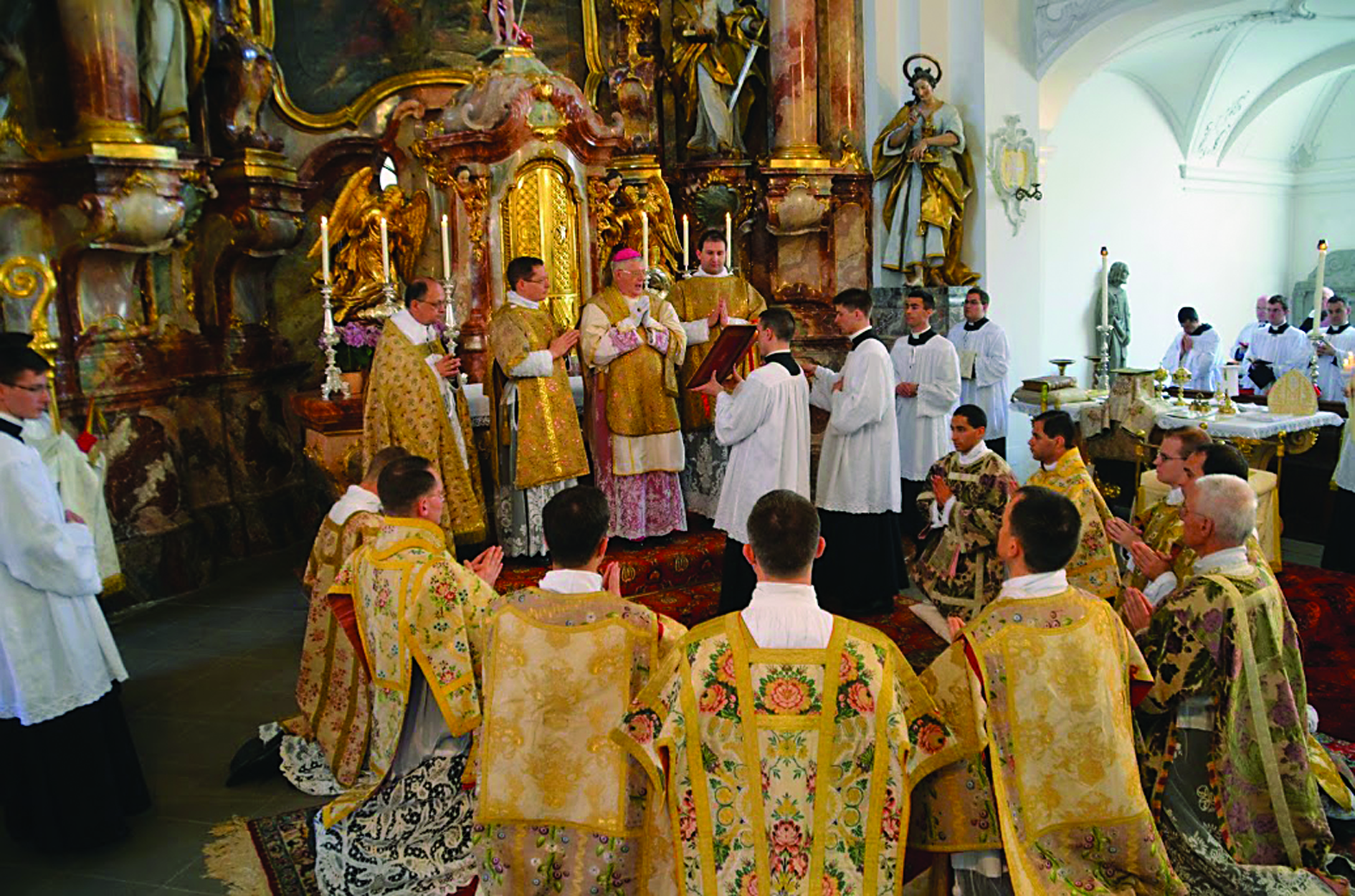
The European Fraternity of St. Peter diaconal ordinations in Lindau, Germany, some years ago, conferred by Abp. Guido Pozzo, of the Pontifical Commission Ecclesia Dei
“I grew up and was ordained long before the Second Vatican Council, but I never found a rupture between the post-Trent liturgy and the post-Vatican II liturgy. As a student in the earlier 1950s I read J.A. Jungman’s “Missarum Sollemnia” (The Mass of the Roman Rite: Its Origins and Development) and found that Vatican II brought a reform of the Latin rite in the same way that Trent had done. The continuity becomes clear when one sees that every priest is free to use the first Eucharistic prayer (the old “Roman Canon”) — as I do sometimes, and as Pope Francis often does when he celebrates in St. Peter’s. So, the heart of the so-called ‘old Mass’ is preserved also in the so-called ‘new Mass.’
“You say that there is a growing number of faithful who want the ‘old rite,’ but it’s my experience that the overwhelming majority of the faithful are firmly against it. I know many people are scandalized when they come to St. Peter’s in Rome early in the morning and see that on many altars priests celebrating the “old Mass” without any altar boy and no participation of the faithful. They turn to the empty basilica and say: ‘Dominus vobiscum’, ‘Orate fratres’ etc. Some young priests come and want to celebrate the ‘Latin Mass,”‘but they don’t know Latin, whereas the great majority of their parishioners prefer to have the Mass in their vernacular language, so this brings division and quarrels in the parish and people leave. I don’t know the results of the survey [nine questions sent by the Congregation for the Doctrine of the Faith in 2020 asking for bishops’ views on the application of Summorum Pontificum], but it seems that Pope Francis received this kind of information, especially information that some people are of the opinion that only the ‘old Latin Mass’ is really Catholic and orthodox. And they use this position in order to reject the Second Vatican Council more or less in its entirety. In this way, the good intention of Benedict XVI becomes turned to its contrary. What was intended to contribute to reconciliation is turned into division, which refers to the very heart of the unity of the Church, and many Catholics are scandalized about this.
“I know that there are also dangers for the unity of the Church coming from the contrary side. As you know, I am no friend of some intentions of the German Synodal Way. But the Roman Curia (which implies the Pope) has already been very clear about some erroneous positions (celibacy, female priesthood, intercommunion, same-sex blessings etc.). About other positions, we only have heard some extreme public voices, but until now no synodal decision exists. As far as I know, none of the bishops wants any schismatic act and there is a slowly growing number in the bishops’ conference who are resistant. So, there are fears and suspicions but also still hope for reasonable solutions and reforms, which are possible only on the basis of Catholic faith witnessed especially by the Second Vatican Council.”
Cardinal Kasper’s commentary originally appeared in The National Catholic Register.
A Living Catholic Tradition Pope Francis unifies the Roman Rite
 By Rita Ferrone, author of several books about liturgy, and a contributing writer to Commonweal magazine
By Rita Ferrone, author of several books about liturgy, and a contributing writer to Commonweal magazine
This puts an end to the bifurcation of the Roman Rite that Pope Benedict endorsed when he wrote Summorum pontificum. He invented the term “Extraordinary Form” to refer to the older rites, and called the reformed rites the “Ordinary Form.” The Roman Rite had never existed in two forms at the same time, yet that is what he envisioned. He urged the bishops to trust that these “two forms” of the Roman Rite would peacefully coexist and enrich one another. After thirteen years however, it became evident that this dream was not going to materialize.
Clearly, some individuals find serene enjoyment in attending Mass according to the older rites and have no other agenda. But, overall, opening up more space for the older rites has deepened conflict in the Church and led to politicization of the Eucharist. This was always a danger. Traditionalist movements—both those that went into schism, as did the followers of Archbishop Marcel Lefebvre, and those who remained in communion with Rome— have long been associated with hard-right and authoritarian political regimes. Everything from the effort to restore the monarchy in France (a hopeless cause), to suppression of the indigenous peoples of Brazil (an ongoing problem), has flown under the flag of Catholic traditionalism. Pope Benedict did not believe the danger was there, but it was.
Opposition to Pope Francis has also found a base in traditionalist communities. His teaching on marriage and family, his call for pastoral accompaniment, and especially his commitment to ecological responsibility and economic justice, have been virulently opposed in such circles. It is no accident that the American Cardinal Raymond Burke, one of the pope’s most public antagonists, is a worldwide chaplain to Catholic traditionalist communities, or that the Austrian who threw the Pachamama statue into the Tiber during the Amazon Synod was a traditionalist, or that the disgruntled former Vatican diplomat, Archbishop Carlo Maria Viganò, tried to unseat the Pope.
Even beyond the scandal of a series of attacks on a reigning pope, a political struggle over the enduring legacy of an ecumenical council has been hanging in the balance. Vatican II’s opening to the world—its commitment to ecumenism, interfaith dialogue, and discerning the signs of the times—has been sharply criticized and rejected by advocates for the older rites.
[…]
Opening up more space for the older rites has deepened conflict in the Church and led to politicization of the Eucharist. Excerpt from Commonweal magazine.
“The Church is not just now; the Church is of all times”
By Bishop Athanasius Schneider – Auxiliary bishop of Astana, Kazakhstan
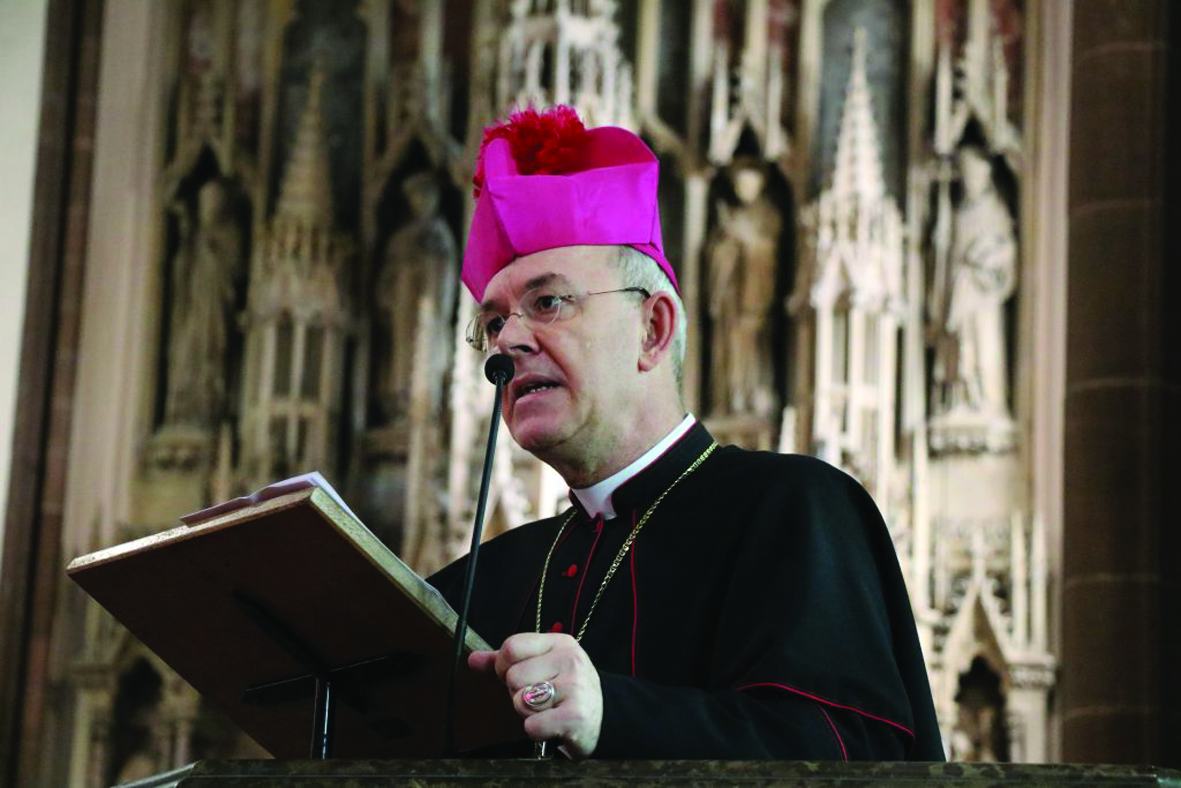 In this case, I think that you, the faithful and the priests, have the right to a liturgy that is the liturgy of all the saints, almost of all times. So in this case the Holy See does not have the right to suppress a heritage of the whole Church. That would be an abuse, even on the part of a bishop. In this case, you can continue to celebrate the Mass, formally in disobedience, but you will be in obedience to the Church of all times, to all the popes who have celebrated this Mass. And continue with respect to pray for this bishop or for the pope. But find some forms perhaps of catacomb Masses, of clandestine Masses.
In this case, I think that you, the faithful and the priests, have the right to a liturgy that is the liturgy of all the saints, almost of all times. So in this case the Holy See does not have the right to suppress a heritage of the whole Church. That would be an abuse, even on the part of a bishop. In this case, you can continue to celebrate the Mass, formally in disobedience, but you will be in obedience to the Church of all times, to all the popes who have celebrated this Mass. And continue with respect to pray for this bishop or for the pope. But find some forms perhaps of catacomb Masses, of clandestine Masses.
But always with the spirit “sentire cum Ecclesia,” with a love for the Church and for souls. So it would be a service to the whole Church.
“An Evil Edict from Pope Francis”
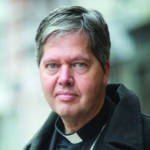 By Bishop Rob Mutsaerts, auxiliary Bishop of ‘s-Hertogenbosch, Netherlands
By Bishop Rob Mutsaerts, auxiliary Bishop of ‘s-Hertogenbosch, Netherlands
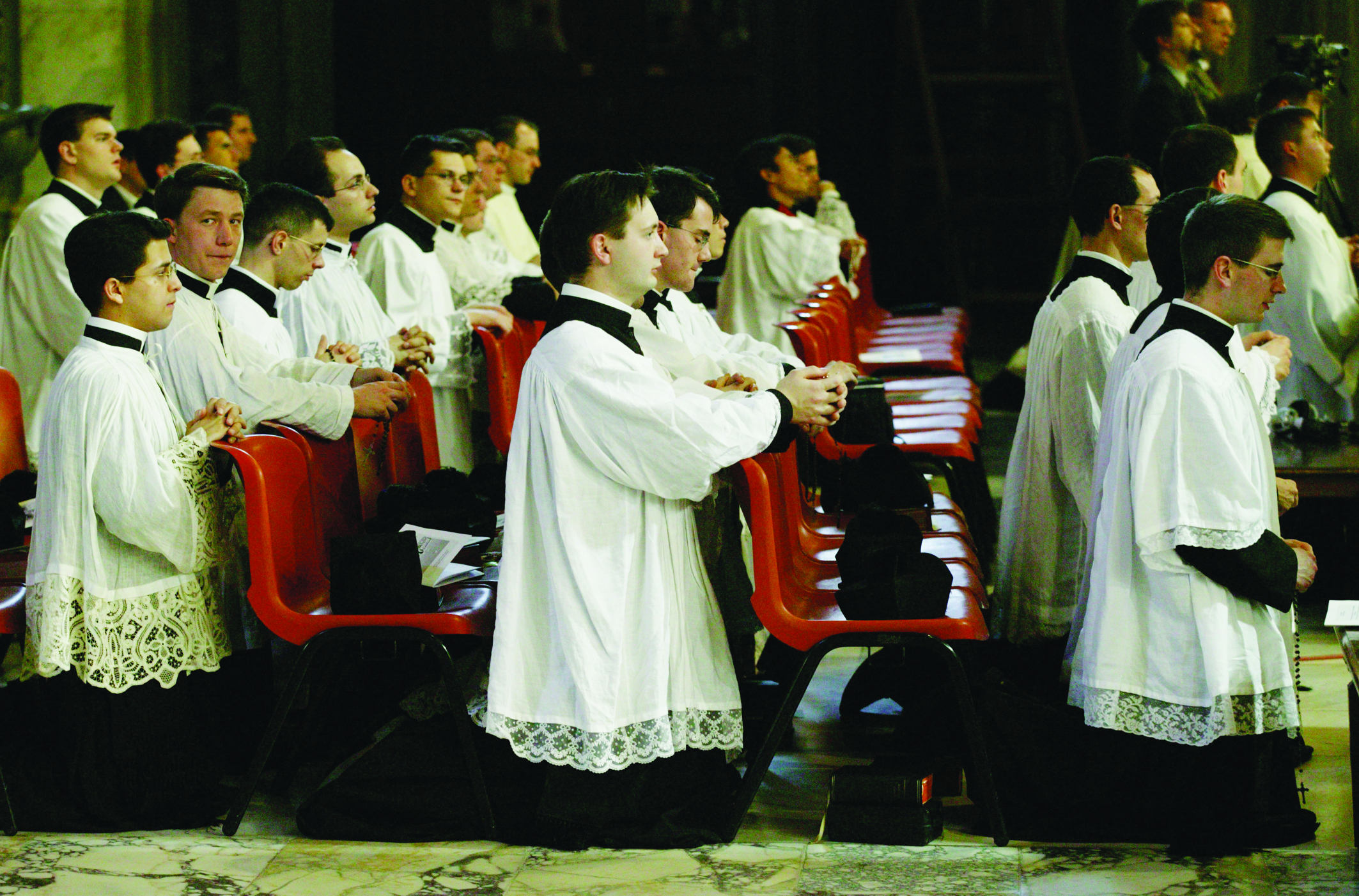
May 24, 2003. Rome, Basilica of St. Mary Major. The Holy Rosary prior to the celebration of Mass according to the old rite by the late Cardinal Dario Castrillon Hoyos
Pope Francis promotes synodality: everyone should be able to talk, everyone should be heard. This was hardly the case with his recently published motu proprio Traditionis Custodes, an ukase [imperial edict] that must put an immediate termination on the traditional Latin Mass.
In so doing, Francis puts a big bold line through Summorum Pontificum, Pope Benedict’s motu proprio that gave ample scope to the old Mass.
The fact that Francis here uses the word of power without any consultation indicates that he is losing authority.
This was already evident earlier when the German Bishops’ Conference took no notice of the Pope’s advice regarding the synodality process.
The same occurred in the United States when Pope Francis called on the Bishops’ Conference not to prepare a document on worthy Communion.
The Pope must have thought that it would be better [in this case] not to give advice any more, but rather a writ of execution, now that we’re talking about the traditional Mass!
***
The language used looks very much like a declaration of war.
Every Pope since Paul VI has always left openings for the old Mass.
If any changes were made [in that opening], they were minor revisions—see, for example, the indults of 1984 and 1989.
John Paul II firmly believed that bishops should be generous in allowing the Tridentine Mass.
Benedict opened the door wide with Summorum Pontificum: “What was sacred then is sacred now.”
Francis slams the door hard through Traditionis Custodes.
It feels like a betrayal and is a slap in the face to his predecessors.
***
By the way, the Church has never abolished liturgies.
Not even Trent [did so].
Francis breaks completely with this tradition.
The motu proprio contains, briefly and powerfully, some propositions and commands.
Things are explained in more detail by means of an accompanying longer statement.
***
This statement contains quite a few factual errors.
One of them is the claim that what Paul VI did after Vatican II is the same as what Pius V did after Trent.
This is completely far from the truth.
Remember that before that time [of Trent] there were various transcribed manuscripts in circulation and local liturgies had sprung up here and there. The situation was a mess.
Trent wanted to restore the liturgies, remove inaccuracies, and check for orthodoxy. Trent was not concerned with rewriting the liturgy, nor with new additions, new Eucharistic prayers, a new lectionary, or a new calendar. It was all about ensuring uninterrupted organic continuity.
The missal of 1570 harks back to the missal of 1474 and so on back to the fourth century. There was continuity from the fourth century onwards.
After the fifteenth century, there are four more centuries of continuity. From time to time, there were at most a few minor changes—an addition of commemoration, or rubric.
In the conciliar document Sacrosanctum Concilium, Vatican II asked for liturgical reforms.
All things considered, this was a conservative document.
Latin was maintained, Gregorian chants retained their legitimate place in the liturgy.
However, the developments that followed Vatican II are far removed from the council documents.
The infamous “Spirit of the Council” is nowhere to be found in the Council texts themselves.
Only 17% of the orations of the old missal of Trent can be found [intact] in the new missal of Paul VI.
You can hardly speak of continuity, of an organic development.
Benedict recognized this, and for that reason gave ample space to the Old Mass.
He even said that no one needed his permission (“what was sacred then is still sacred now”).
***
Pope Francis is now pretending that his motu proprio belongs to the organic development of the Church, which utterly contradicts the reality.
By making the Latin Mass practically impossible, he finally breaks with the age-old liturgical tradition of the Roman Catholic Church.
***
Liturgy is not a toy of Popes; it is the heritage of the Church.
The Old Mass is not about nostalgia or taste.
The Pope should be the guardian of Tradition; the Pope is a gardener, not a manufacturer.
Canon law is not merely a matter of positive law; there is also such a thing as natural law and divine law, and, moreover, there is such a thing as Tradition that cannot simply be brushed aside.
***
What Pope Francis is doing here has nothing to do with evangelization and even less to do with mercy.
It is more like ideology.
Go to any parish where the Old Mass is celebrated. What do you find there?
People who just want to be Catholic.
These are generally not people who engage in theological disputes, nor are they against Vatican II (though they are against the way it was implemented).
They love the Latin Mass for its sacredness, its transcendence, the salvation of souls that is central to it, the dignity of the liturgy.
You encounter large families; people feel welcome.
It is only celebrated in a small number of places.
Why does the Pope want to deny people this?
I come back to what I said earlier: it is ideology.
It is either Vatican II—including its implementation, with all its aberrations—or nothing!
The relatively small number of believers (a number growing, by the way, as the Novus Ordo is collapsing) who feel at home with the traditional Mass must and will be eradicated.
That is ideology and evil.
***
If you really want to evangelize, to be truly merciful, to support Catholic families, then you hold the Tridentine Mass in honor.
As of the date of the motu proprio, the Old Mass may not be celebrated in parish churches (where then?); you need explicit permission from your bishop, who may only allow it on certain days; for those who will be ordained in the future and want to celebrate the Old Mass, the bishop must seek advice from Rome.
How dictatorial, how un-pastoral, how unmerciful do you want to be!
***
Francis, in Article 1 of his motu proprio, calls the Novus Ordo (the present Mass) “the unique expression of the Lex Orandi of the Roman Rite.”
He therefore no longer distinguishes between the Ordinary Form (Paul VI) and the Extraordinary Form (Tridentine Mass).
It has always been said that both are expressions of the Lex Orandi, not just the Novus Ordo.
Again, the Old Mass was never abolished!
I never hear from Bergoglio about the many liturgical abuses that exist here and there in countless parishes.
In parishes everything is possible—except the Tridentine Mass.
All weapons are thrown into the fray to eradicate the Old Mass.
***
Why? For God’s sake, why?
What is this obsession of Francis to want to erase* that small group of traditionalists?
The Pope should be the guardian of tradition, not the jailer of tradition.
While Amoris Laetitia excelled in vagueness, Traditionis Custodes is a perfectly clear declaration of war.
***
I suspect that Francis is shooting himself in the foot with this motu proprio.
For the Society of St. Pius X, it will prove to be good news.
They will never be able to guess how indebted they’ll be to Pope Francis….
(Published in Dutch on July 22 on the bishop’s blog)
[* The bishop here uses the loaded German word ausradieren, which was used by Hitler when he was speaking of erasing cities off the map: “Wir werden ihre Städte ausradieren.”
“A law must be accepted to be valid”
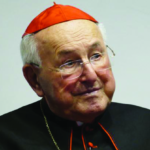 By Cardinal Walter Brandmüller, German former president of the pontifical Committee for the Historical Sciences
By Cardinal Walter Brandmüller, German former president of the pontifical Committee for the Historical Sciences
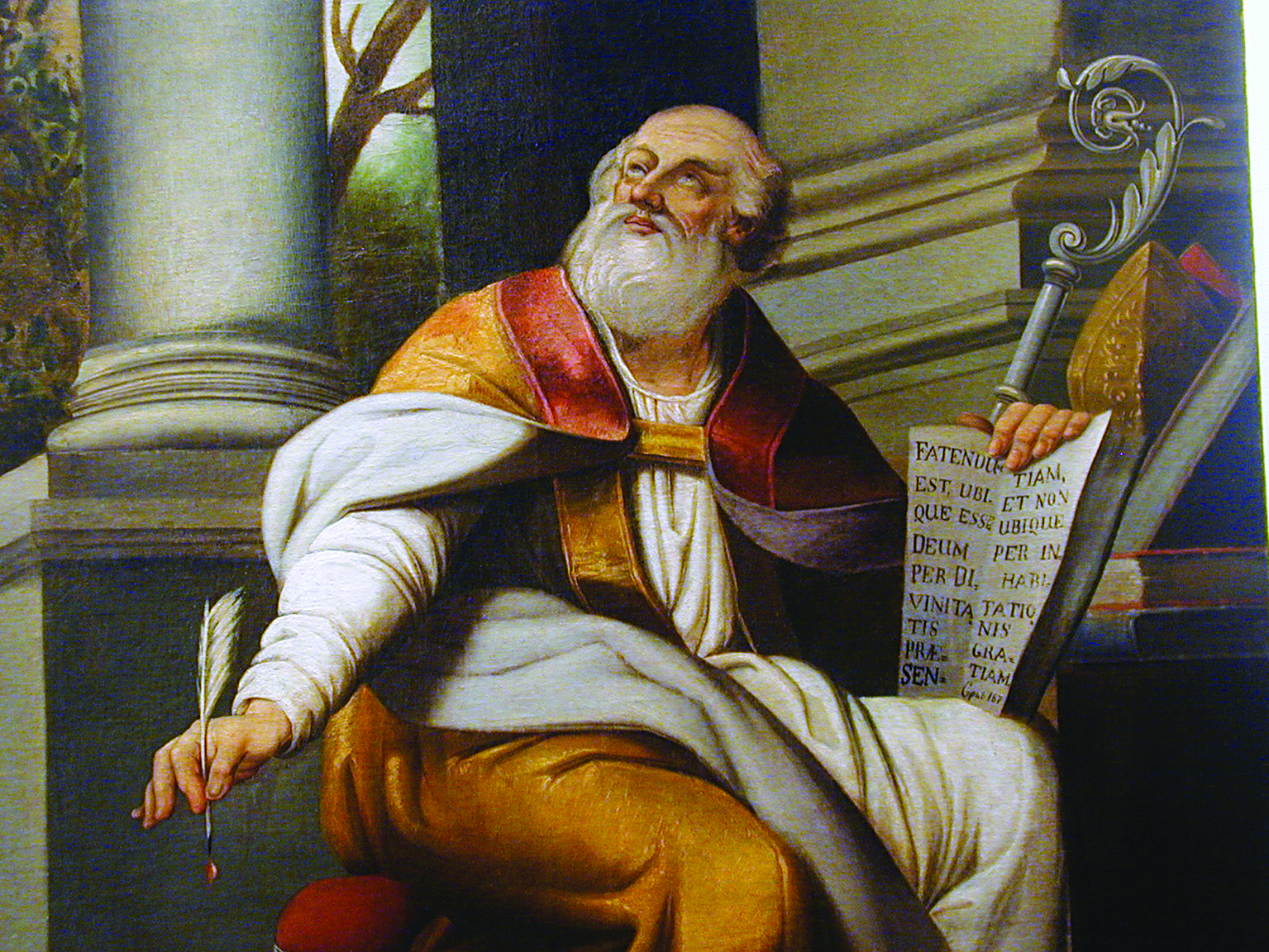
The great Augustine reminded us: “Securus iudicat orbis terrarum.” (“The verdict of the world is conclusive”)
With his motu proprio Traditionis custodes, Pope Francis has practically unleashed a hurricane that has upset those Catholics who feel attached to the “Tridentine” rite of Mass revived by Benedict XVI’s Summorum Pontificum.[…]
If the discussion about Traditionis custodes has so far concerned the legislative content of the motu proprio, here the text will be considered from a formal point of view as a legal text.
First of all, it should be noted that a law does not require special acceptance by the interested parties to acquire binding force.
However, it must be received by them.
Reception means affirmative acceptance of the law in the sense of “making it your own.”
Only then does the law acquire confirmation and permanence, as the “father” of canon law, Gratian († 1140), taught in his famous Decretum. Here is the original text:
“Leges instituuntur cum promulgantur. Firmantur cum moribus utentium approbantur. Sicut enim moribus utentium in contrariem nonnullae leges hodie abrogatae sunt, ita moribus utentium leges confirmantur ”(c. 3 D. 4).
[Our translation: “Laws are established when they are promulgated. They are confirmed when they are approved by the behavior of those who use them. For as due to the behaviors of users in an opposing direction quite a few laws today have been abrogated, so through the behaviors of the users the laws are confirmed.” -Ed.]
This means, however, that for a law to be valid and binding, it must be approved by those to whom it is addressed. Thus, on the other hand, some laws today are abolished by non-compliance, just as, on the contrary, the laws are confirmed by the fact that those concerned observe them.
[…]
This — and this must be strongly emphasized — naturally applies only to purely ecclesiastical laws, but in no case to those based on divine or natural law.
As an example of a lex mere ecclesiastica [“a merely ecclesiastical law”] consider the apostolic constitution Veterum sapientia [“the wisdom of the ancients”] of Pope John XXIII of February 22, 1962, in which the Pope prescribed Latin for university teaching, among other things.
Young scholar that I was, I reacted only by shaking my head… the history of the Church, even of modern times, (taught) in Latin? With all the love professed for the Roman language — how could it work?
And so it remained. Veterum sapientia was hardly printed before it was soon forgotten.
[…]
The thing is done, therefore, friends, and now, patience. Never has unenlightened zeal served peace, or the common good. It was St. John Henry Newman who, quoting the great Augustine, reminded us: “Securus iudicat orbis terrarum.” [“The verdict of the world is conclusive.”]
In the meantime, let’s pay close attention to our language. “Verbal disarmament” has already been called that.
In more pious words: no violation of brotherly (and recently sisterly) love!
Now — seriously again: what a grotesque idea that the mystery of love itself [that is, the Mass, the Eucharist, the holy sacrifice of Christ] should become a bone of contention.
Again, we quote Saint Augustine, who called the Holy Eucharist the bond of love and peace that encloses the head and the members of the Church.
No greater triumph of hell could be imagined that if this bond were broken again, as has happened many times in the past.
Then the onlooking world would grin: “Look how they love each other!”
Cardinal Brandmüller originally posted his essay July 29, 2021 on the German Catholic website Kath.net. (Trans. Robert Moynihan)
“A disturbing operation of cancel culture”
 By Archbishop Carlo Maria Viganò, Apostolic Nuncio to the United States from October 2011 to April 2016
By Archbishop Carlo Maria Viganò, Apostolic Nuncio to the United States from October 2011 to April 2016
I exhort my Brothers in the Episcopate, Priests, and laity to strenuously defend their right to the Catholic liturgy solemnly sanctioned by Saint Pius V’s Bull Quo Primum, and by means of it to defend the Holy Church and the Papacy, which have both been exposed to discredit and ridicule by the Pastors themselves.
The question of the Motu Proprio is not in the least negotiable, because it reaffirms the legitimacy of a rite that has never been abrogated nor is able to be abrogated. Furthermore, in addition to the certain damage that airing these novelties will cause to souls and to the certain advantage that will come from them to the Devil and his servants, there is also added the indecorous rudeness displayed to Benedict XVI, who is still living, by Bergoglio, who ought to know that the authority the Roman Pontiff exercises over the Church is vicarious and that the power which he holds comes to him from Our Lord Jesus Christ, the One Head of the Mystical Body. Abusing the Apostolic authority and the power of the Holy Keys for a purpose opposed to that for which they were instituted by the Lord represents an unheardof offense against the Majesty of God, a dishonor for the Church, and a sin for which he will have to answer to the One whose Vicar he is. And whoever refuses the title of Vicar of Christ knows that by doing so the legitimacy of his authority also fails.
It is not acceptable for the supreme authority of the Church to allow itself to cancel, in a disturbing operation of cancel culture in a religious key, the inheritance it has received from its Fathers; nor is it permissible to consider as being outside of the Church those who are not prepared to accept the privation of the Mass and the Sacraments celebrated in the form that has molded almost two thousand years of Saints.
The Church is not an agency in which the marketing office decides to cancel old products from the catalog and propose new ones in their stead according to customer requests. Imposing the liturgical revolution with force on priests and the faithful in the name of obedience to the Council, stripping away from them the very soul of the Christian life and replacing it with a rite that the Freemason Bugnini copied from Cranmer’s Book of Common Prayer, was already painful. That abuse, partially healed by Benedict XVI with the Motu Proprio, cannot be repeated in any way now in the presence of elements that are all largely in favor of the liberalization of the ancient liturgy. If one really wanted to help the people of God in this crisis, the reformed liturgy should have been abolished, which in fifty years has caused more damage than Calvinism has done.
—An excerpt from the essay “Considerations on the feared modification of the motu proprio Summorum Pontificum”
It’s Not About Latin
By Robert MIckens editor-in-chief of the Catholic magazine La Croix
The difference between the Old Rite and the Reformed Rite boils down to the ancient Christian dictum — lex orandi, lex credendi. Our worship reflects what we actually believe. Our liturgy reflects our theology and ecclesiology.
Most Catholics — including Pope Francis — believe that the Second Vatican Council was a watershed moment in the life of the Church which, through the guidance of the Holy Spirit, helped us gain new understandings and develop new formulations of our faith Tradition. Because of what happened at Vatican II, the Roman Church today is emerging as a key player in the ecumenical movement and is actively involved in interreligious dialogue. It is a champion of religious freedom (not just for Catholics!) and has abandoned the Tridentine era idea that error has no rights.
It is struggling (finally) to eliminate the cancer of clericalism and find more active roles for the non-ordained, especially women, even in our liturgical celebrations. It believes that all of us in the Church, and not just the “sacred ministers” or the “consecrated virgins”, have a vocation to holiness.
And there have been other changes in the way we understand and express our faith since — and because of — Vatican Council II. The reformed rite of Mass reflects that. The Tridentine Rite does not. And it could not. Even if — horror of horrors — it could actually be celebrated in English.
Extraordinary Form as incitement to disobedience and disunity?
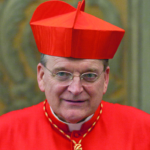 By Cardinal Raymond Burke, Canon Lawyer, is a former Prefect of the Supreme Tribunal of the Apostolic Signatura. Currently he is the Patron of the Sovereign Military Order of Malta
By Cardinal Raymond Burke, Canon Lawyer, is a former Prefect of the Supreme Tribunal of the Apostolic Signatura. Currently he is the Patron of the Sovereign Military Order of Malta
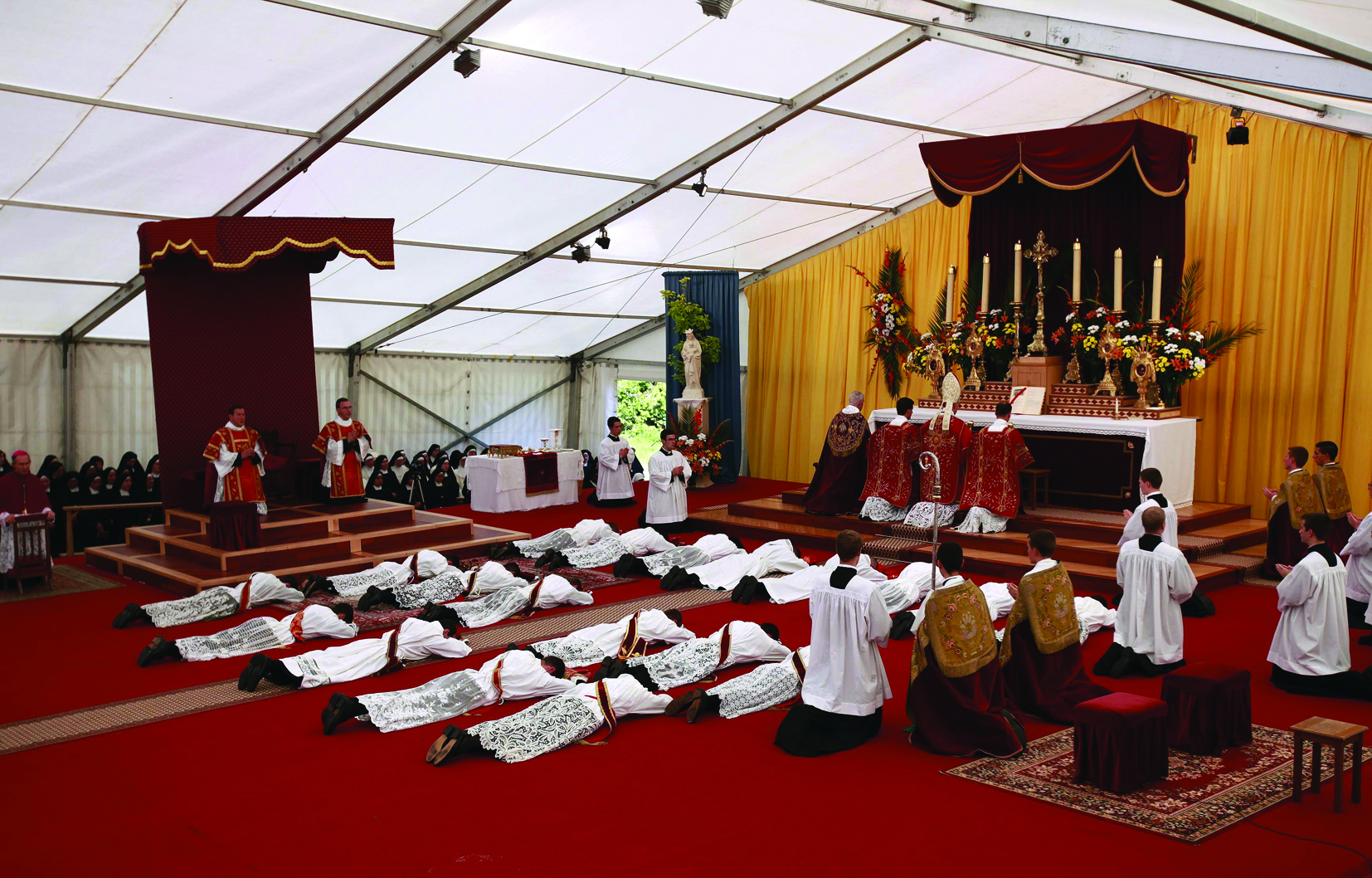
Priests and deacons lie prostrate in front of Bishop Bernard Fellay, superior of the Society of St. Pius X, during an ordination ceremony in Econe, Switzerland, June 29, 2012. The Swiss-based organization rejects some of the reforms of the Second Vatican Council. (CNS photo/Denis Balibouse, Reuters)

Pope Benedict greets Bishop Fellay in 2017
Regarding the perceived grave evil constituted by the UA [usus antiquor, the Traditional Mass] I have a wide experience over many years and in many different places with the faithful who regularly worship God according to the UA. In all honesty, I must say that these faithful, in no way, reject “the Church and her institutions in the name of what is called the ‘true Church’.” Neither have I found them out of communion with the Church or divisive within the Church. On the contrary, they love the Roman Pontiff, their Bishops and priests, and, when others have made the choice of schism, they have wanted always to remain in full communion with the Church, faithful to the Roman Pontiff, often at the cost of great suffering. They, in no way, ascribe to a schismatic or sedevacantist ideology.
The Letter accompanying the Motu Proprio states that the UA was permitted by Pope Saint John Paul II and later regulated by Pope Benedict XVI with “the desire to foster the healing of the schism with the movement of Mons. Lefebvre.” The movement in question is the Society of Saint Pius X. While both Roman Pontiffs desired the healing of the schism in question, as should all good Catholics, they also desired to maintain in continuance the UA for those who remained in the full communion of the Church and did not become schismatic. Pope Saint John Paul II showed pastoral charity, in various important ways, to faithful Catholics attached to the UA, for example, granting the indult for the UA but also establishing the Priestly Fraternity of Saint Peter, a society of apostolic life for priests attached to the UA. In the book Last Testament in His Own Words, Pope Benedict XVI responded to the affirmation, “The reauthorization of the Tridentine Mass is often interpreted primarily as a concession to the Society of Saint Pius X,” with these clear and strong words: “This is just absolutely false! It was important for me that the Church is one with herself inwardly, with her own past; that what was previously holy to her is not somehow wrong now” (pp. 201-202). In fact, many who presently desire to worship according to the UA have no experience and perhaps no knowledge of the history and present situation of the Priestly Society of Saint Pius X. They are simply attracted to the holiness of the UA.
Yes, there are individuals and even certain groups which espouse radical positions, even as is the case in other sectors of Church life, but they are, in no way, characteristic of the greater and ever increasing number of faithful who desire to worship God according to the UA. The Sacred Liturgy is not a matter of so-called “Church politics” but the fullest and most perfect encounter with Christ for us in this world. The faithful in question, among whom are numerous young adults and young married couples with children, encounter Christ, through the UA, Who draws them ever closer to Himself through the reform of their lives and cooperation with the divine grace which flows from His glorious pierced Heart into their hearts. They have no need to make a judgment regarding those who worship God according to the Usus Recentior (the More Recent Usage, what Pope Benedict XVI called the Ordinary Form of the Roman Rite) [UR], first promulgated by Pope Saint Paul VI. As one priest, member of an institute of the consecrated life which serves these faithful, remarked to me: I regularly confess to a priest, according to the UR, and participate, on special occasions, in the Holy Mass according to the UR. He concluded: Why would anyone accuse me of not accepting its validity?
If there are situations of an attitude or practice contrary to the sound doctrine and discipline of the Church, justice demands that they be addressed individually by the pastors of the Church, the Roman Pontiff and the Bishops in communion with him. Justice is the minimum and irreplaceable condition of charity. Pastoral charity cannot be served, if the requirements of justice are not observed.
A schismatic spirit or actual schism are always gravely evil, but there is nothing about the UA which fosters schism. For those of us who knew the UA in the past, like myself, it is a question of an act of worship marked by a centuries-old goodness, truth and beauty. I knew its attraction from my childhood and indeed became very attached to it. Having been privileged to assist the priest as a Mass Server from the time when I was ten years old, I can testify that the UA was a major inspiration of my priestly vocation. For those who have come to the UA for the first time, its rich beauty, especially as it manifests the action of Christ renewing sacramentally His Sacrifice on Calvary through the priest who acts in His person, has drawn them closer to Christ. I know many faithful for whom the experience of Divine Worship according to the UA has strongly inspired their conversion to the Faith or their seeking full communion with the Catholic Church. Also, numerous priests who have returned to the celebration of the UA or who have learned it for the first time have told me how deeply it has enriched their priestly spirituality. This is not to mention the saints all along the Christian centuries for whom the UA nourished an heroic practice of the virtues. Some have given their lives to defend the offering of this very form of divine worship.
Excerpt from Statement on the Motu Proprio Traditionis Custodes.
The Church is not an archipelago
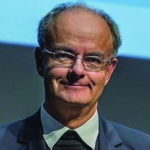 By Jean-François Chiron, Presbyter in the Diocese of Chambéry, France and professor of theology at the Catholic University of Lyon
By Jean-François Chiron, Presbyter in the Diocese of Chambéry, France and professor of theology at the Catholic University of Lyon
There is nothing more bitter than liturgical controversies.
Liturgy reveals the community’s relationship with God, just as it reveals the type of Church the community wants to embody and how that Church relates to the world.
In all this, more than anything else, the liturgy is symbolic.
Let us add that it is, by definition, visible, and that it concerns the whole person, in his or her body and in his or her history: the relationship with oneself is involved.
With just the slightest bit of irrationality things can go to extremes.
We can see this clearly with the reactions to Pope Francis’ new “motu proprio” Traditionis custodes.
It is not scandalous that a pope wishes to express himself on problems of an undeniable gravity.
It is not for nothing that Francis begins his latest document with words that designate the bishops as guardians of tradition.
Benedict XVI’s document Summorum Pontificum (2007) stripped the bishops (and parish priests) of all authority in this matter: they were obliged to comply with requests addressed to them.
This was an unprecedented state of affairs in the Catholic tradition. Francis has re-established the bishops’ rightful authority to regulate the liturgy in their dioceses.
We must also be aware of the unprecedented nature of Benedict XVI’s provisions.
For the first time in history, the choice of a rite was left to the subjectivity of believers, priests and faithful.
Paradoxically, it was in the name of tradition that individualistic and liberal modernity annexed a new field, according to the laws of supply and demand.
By changing the rules of the game, Francis intends to limit the proliferation of celebrations that do not comply with the post-Vatican II liturgical reform.
This, too, is unpleasant and shows the extent to which some people are in a militant, if not proselytizing, frame of mind.
The hermeneutic of Cain’s envy against Abel
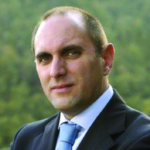 By Professor Massimo Viglione, historian, writer and lecturer on the traditional values of Western Civilization
By Professor Massimo Viglione, historian, writer and lecturer on the traditional values of Western Civilization
“They will throw you out of the synagogues” (Jn 16:2)
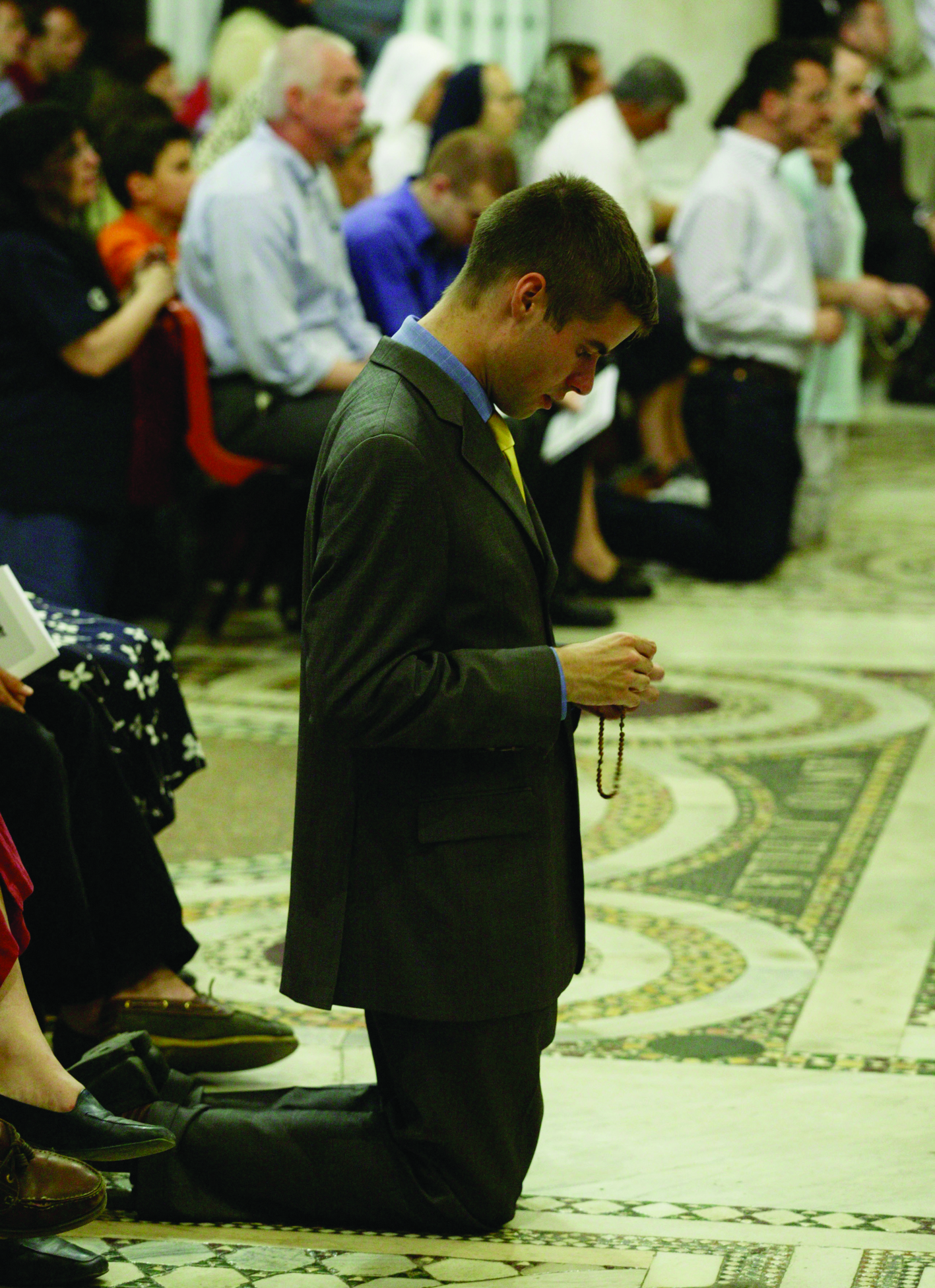 There have been many comments, one after the other, in these days following the official declaration of war — made by Francis himself — of the ecclesiastical hierarchy against the Holy Mass of all time.
There have been many comments, one after the other, in these days following the official declaration of war — made by Francis himself — of the ecclesiastical hierarchy against the Holy Mass of all time.
And more than one comment has revealed the not-at-all concealed contempt and the simultaneous absolute clarity of content and form that marks the Motu Proprio Traditionis Custodes, written in a style and formality that is political more than theological or spiritual.
It is in effect a declaration of war.
[,,,]
The Lex Orandi of the Church, in fact, is not a “precept” of positive law voted on by a parliament or prescribed by a sovereign, which can always be retracted, changed, replaced, improved, or worsened.
The Lex Orandi of the Church, furthermore, is not a specific and determined “thing” in time and space, as much as it is the collective whole of theological and spiritual norms and liturgical and pastoral practices of the entire history of the Church, from evangelical times — and specifically from Pentecost — up to today.
Although it obviously lives in the present, it is however rooted in the entire past of the Church. Therefore, we are not talking here about something human — exclusively human — that the latest boss can change at his pleasure.
The Lex Orandi comprises all twenty centuries of the history of the Church, and there is no man or group of men in the world who can change this twenty-century-old deposit.
There is no Pope, council, or episcopate that can change the Gospel, the Depositum Fidei, or the universal Magisterium of the Church.
Nor can the Liturgy of all time be changed.
[…]
The Montinian reform broke all this apart, improvisedly inventing a new rite adapted to the needs of the modern world and transforming the sacred Catholic Liturgy from being theocentric to being anthropocentric.
From the Holy Sacrifice of the Cross repeated in an unbloody manner through the action of the sacerdos, we transitioned to the assembly of the faithful led by its “presider.”
From a salvific and even exorcistic instrument, we passed to a horizontal populist gathering, susceptible to continual autocephalous and relativistic changes and adaptations that are more or less “festive” and whose supposed “value” is based on winning mass consensus, as if it were a political instrument aimed at the audience, an audience however that is progressively completely disappearing.
[…]
The “new Mass” has lost in the face of history and the evidence of the facts.
The churches are empty, ever more empty; the religious orders — even, and perhaps above all, the most ancient and glorious ones — are disappearing; monasteries and convents are deserted, inhabited only by religious who are now very advanced in years, and upon whose death the doors will be shuttered; vocations are reduced to nothing; even the “otto per mille” [Italian church tax] has been cut in half, despite the obsessive cloying and pathetic third-world-esque publicity it receives; priestly vocations are scarce — everywhere we see pastors with three, four, or at times even five parishes to run.
The mathematics of the Council and the “new Mass” is the most merciless thing that can exist.
[…]
The Hermeneutic of Hatred
Where did the hermeneutic of continuity shipwreck?
It shipwrecked, along with “Mercy,” in the Hermeneutic of Hatred.
The Mass of all time, on the other hand, is the exact antithesis of all this.
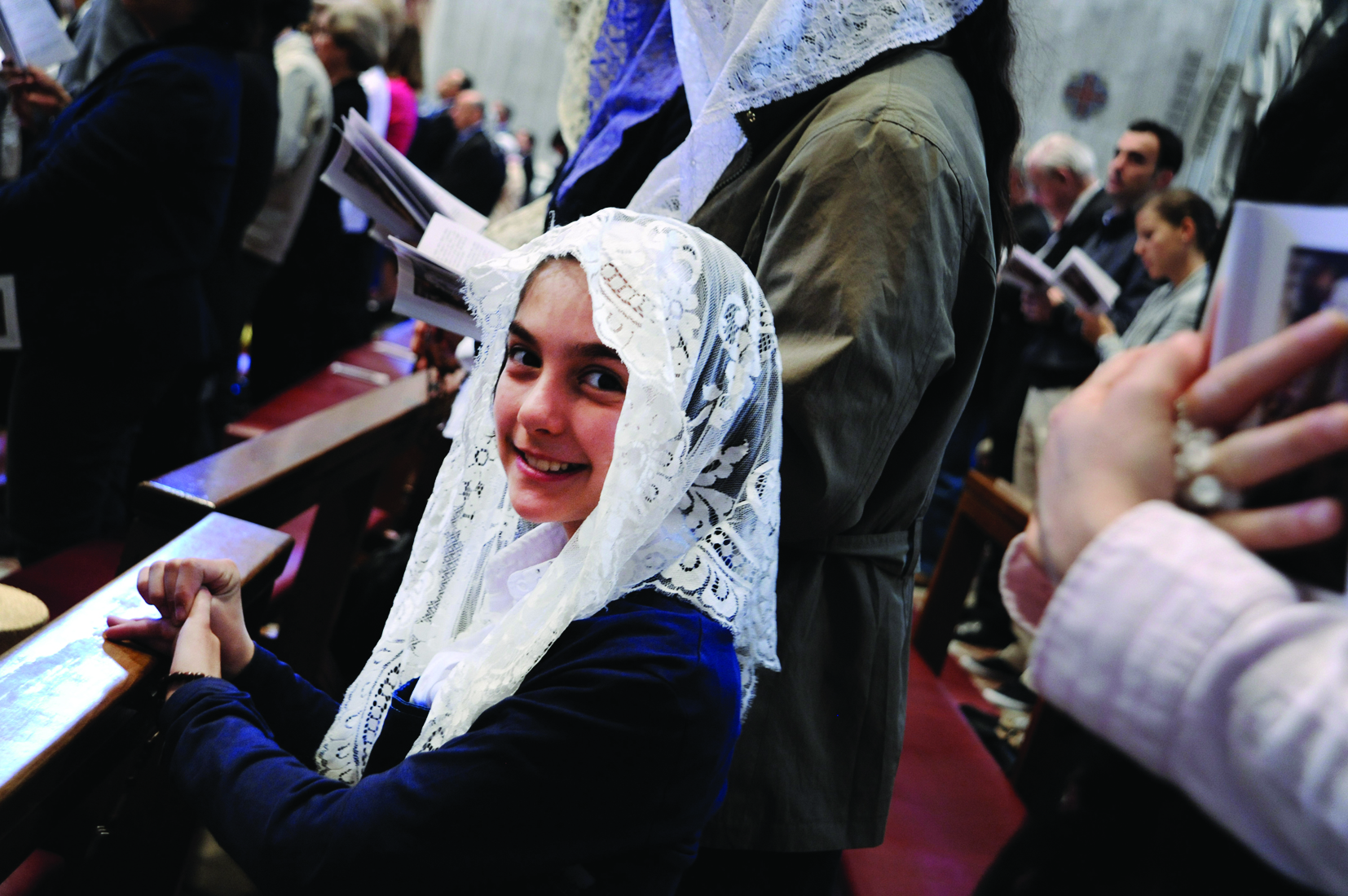
It is hatred of kneeling girls wearing white veils, hatred of ladies with many shildren wearing black veils; hatred of men kneeling in prayer and recollection, perhaps with the rosary in their hands
It is disruptive in its propagation, despite all of the constant hostility and episcopal censorship; it is sanctifying in its perfection; it is engaging precisely because it is the expression of the Eternal and Unchanging, of the Church of all time, of the theology and spirituality of all time, of the liturgy of all time, of the morality of all time.
It is loved because it is divine, sacred, and hierarchically ordered, not human, “democratic” or liberal-egalitarian.
It is both divine and human together, like its Founder on the day of the Last Supper.
It is loved above all by young people, both the laity who frequent it as well as among those are approaching the priesthood: while the seminaries of the new rite (the Lex Orandi of Bergoglio) are dens of heresy and apostasy (and it is better to be silent about what else…), the seminaries and novitiates of the world of Tradition overflow with vocations, both male and female, in an unstoppable stream.
The explanation of this incontrovertible fact is found in the one Lex Orandi of the Catholic Church, which is the one willed by God Himself and from which no rebel may escape.
Here is the root of the hatred
It is the worldwide and multi-generational consensus against the enemy who must die, in the face of the failure of that which was supposed to bring new life and instead is withered and dying, because the lifeblood of Grace is missing.
It is hatred of kneeling girls wearing white veils, hatred of ladies with many children wearing black veils; hatred of men kneeling in prayer and recollection, perhaps with the rosary in their hands; hatred of priests in cassocks who are faithful to the doctrine and spirituality of all time; hatred of families that are large and peaceful despite the difficulties of this society; hatred of fidelity, of seriousness, of the thirst for the sacred.
It is hatred of an entire world, ever more numerous, that has not fallen — or no longer falls — into the humanistic and globalist trap of the “New Pentecost.”
At its root, that mad shooting is nothing other than a new murder of Abel by an envious Cain.
And in fact, in the new Rite what is offered to God is “the fruit of the earth and the work of human hands (Cain), while in the Rite of all time what is offered is “hanc immaculatam Ostiam” (the firstborn Lamb of Abel: Gen 4:2-4).
[…]
All this will be confirmed above all by an aspect that up until now no one has highlighted: the true goal of this multi-decade war against the Sacred Catholic Liturgy, which then is the true goal of the creation of the New Rite ex nihilo (better to say, improvisedly) is the dissolution of the Catholic Liturgy in itself, of every form of the Holy Sacrifice, of doctrine itself, of the Church herself in the great globalist current of the universal religion of the New World Order.
And, in this perspective, the Mass of all time is the first element that must disappear, since it is the absolute bulwark of all that they want to make disappear: it is the first obstacle to every form of ecumenism.
[…]
We are in the most decisive days of human history and also of the history of the Church.
All of the authors who have commented in these days invite their readers to prayer and hope.
We will obviously do this too, in the full conviction that everything that is happening in these days and, more generally, since February 2020, is the unequivocal sign that the times are drawing near in which God will intervene to save His Mystical Body and humanity, as well as the order that He Himself has given to creation and to human coexistence, in the measure He wishes to give it, in the way and time of His choosing.
Let us pray; let us hope; let us keep vigil, and let us choose to be on the right side. The enemy helps us in the choice: in fact, he is always the same everywhere. First published at Duc in altum (“Set out into the deep”) on July 22, 2021.
Italians were “the moving force” behind Traditionis custodes
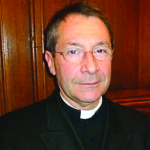 By Fr. Claude Barthe, former main chaplain for the “Summorum Pontifucum pilgrimages” promoting the Traditional Latin Mass at St. Peter’s Basilica
By Fr. Claude Barthe, former main chaplain for the “Summorum Pontifucum pilgrimages” promoting the Traditional Latin Mass at St. Peter’s Basilica
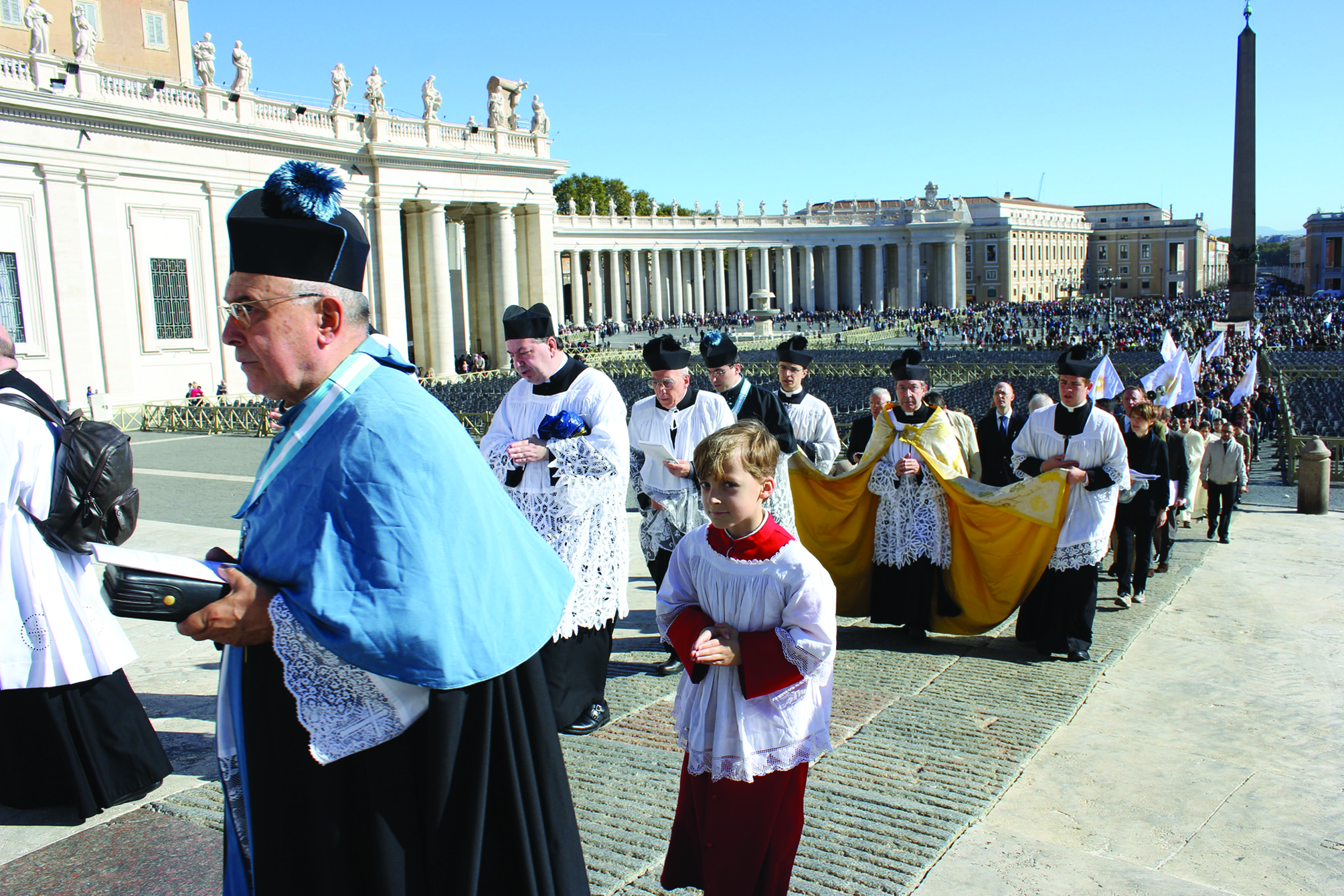
Opposite, center, Fr. Claude Barthe leading a pilgrimage of Associations, Groups and Movements pro Summorum Pontificum of Benedict XVI.
The following interview conducted by French journalist Anne Le Pape first appeared in the French Catholic newspaper Présent and on the website Paix Liturgique on July 28, three weeks after Pope Francis issued his motu proprio Traditionis Custodes severely limiting the Traditional Latin Mass.
Fr. Claude Barthe, who lives in Paris, was the main chaplain for the “Summorum Pontificum pilgrimages” promoting the Traditional Latin Mass at St. Peter’s Basilica in Rome that were attended by thousands in the past decade. The website Rorate Caeli, which published Fr. Barthe’s interview in English on July 30, called Fr. Barthe “a seasoned veteran of the pre-Summorum ‘liturgical wars.’”
Anne Le Pape: Father, rumors about this motu proprio, which practically cancels Benedict XVI’s motu proprio of July 7, 2007, have been floating around for some time. Did you expect it to be published so soon, on July 16?
Fr. Claude Barthe: None of us were quite sure. There had been various rumors. In Rome there was talk of an August publication, while others warned of an imminent publication. The latter version turned out to be true. The Secretariat of State, which led all this, was extremely discreet, it must be admitted.
Recent events seemed to point towards the possibility of an appeasement — such as the words of Cardinal Gambetti, archpriest of St. Peter’s Basilica, who appealed to Summorum Pontificum in a recent interview on Vatican News. Were these hopes unfounded?
I don’t know what Cardinal Gambetti did or said to the Pope, but it is certain that requests were made to postpone this document so as not to start a new liturgical war in the Church. Notably, some say that Cardinal Ladaria, president of the Congregation for the Doctrine of the Faith, held it back as long as he could, as did others. In the end, the decision was made by the Pope and by those who lobbied him to take it, especially the Secretary of State, Cardinal Parolin, the substitute, Archbishop Peña Parra, Cardinal Versaldi, and others who were involved, that is, who participated in these inter-dicastery meetings (meetings between the prefects of the congregations concerned: Divine Worship, Clergy, Bishops, and the Secretariat of State) and who have been working on this document for a long time.
How did the supporters of Francis’ motu proprio prevail?
It was enough to convince the Pope! He has the power to go against anyone… In this case, the major lobby group in the Italian bishops’ conference was set against Summorum Pontificum, mainly because in Italy, rather later than in France, young priests were beginning to celebrate the traditional Mass and to adopt more traditional ideas. They noticed a “traditionalization” of the seminaries, which worried them greatly. In the Curia as well, people like Cardinal Parolin, Cardinal Stella in the Congregation for Clergy, etc., were also very concerned.
What are their arguments for questioning Benedict XVI’s document?

A poster for the event
They are laid out clearly in the accompanying letter. They can also be found on the blog of Andrea Grillo, a lay professor of liturgy at St. Anselm’s who has been extremely hostile to Summorum Pontificum. His idea, taken up by the Pope and the crafters of the recent motu proprio, is that the traditional Mass represents a state of doctrine prior to Vatican II while the new Mass represents the doctrine of Vatican II — something we all already knew. Therefore, it was no longer necessary for the traditional Mass to be a right, but only a tolerance, and even then a tolerance only granted to faithful and priests to help them gradually transition to the new Mass.
So the main reason is doctrinal?
Yes, and it is very important to say this and to be aware of it because, paradoxically, this is all very providential. It is of course very painful. It will hinder the diffusion of the traditional Mass. It will start new persecutions. But, on the other hand, it puts the finger on what hurts, namely the doctrinal status of Vatican II, which has never been settled.


Cardinal Gambetti and Cardinal Ladaria were unfavorable to the Pope’s decree.
How does this motu proprio affect the Ecclesia Dei communities — if we can still call them that?
It will affect them. They are also in the crosshairs, that’s for sure. The document says it clearly; the Pope’s letter indicates it in a cynical way. It is a question of destroying the traditional celebration of the Mass by ensuring there will be no more priests to celebrate it. These communities are particularly targeted because they are “factories” for such priests, as is the Society of St. Pius X, which was alone at the beginning. Henceforth, these institutes are no longer under the jurisdiction of Ecclesia Dei, which no longer exists, nor under the Congregation of the Faith, which is relatively protective, but under the jurisdiction of the Congregation for Religious. They’ve been reduced from their status of pontifical right.
The Congregation for Religious, presided by Cardinal Braz de Aviz, is very much aligned with Francis and is going to get to work to put things in order. For example, they will make canonical visits to the seminaries to verify that the teaching given there is in conformity with Vatican II, and to ensure they study and celebrate the new liturgy there. (…)
So for them, the good of souls is of little importance?
In fact, yes. For them, the good of souls is Vatican II. They prefer not to have priests than to have those they think are bad priests. It’s appalling — even diabolical. It has to be said: this pontificate is attacking every place where there is priestly renewal. The Franciscans of the Immaculate was one example, but there are many others.
In fact, Benedict XVI’s motu proprio was never fully applied, but it did permit the application of John Paul II’s 1988 motu proprio. With Francis, are we now returning to the situation of the 1970s, the period right after the Council?
We have forgotten how terrible those times were to live through. It is different in the sense that 50 years have passed and the persecutors are much less strong than they were at that time. The conciliar Church is very sick, in some places it is dying, like in many French dioceses. It has no more troops, especially no more priests. (…)
What will become of the authorization granted by Francis himself to the priests of the Society of St. Pius X to celebrate marriages and funerals in parishes? Isn’t there a contradiction there?
That hasn’t changed! Yes, there is a contradiction there… But will they still have the right to celebrate publicly in a parish? I repeat: it is better not to dig too deep for the moment. Each should interpret himself or leave it to the bishop to interpret, rather than getting into details. (…)
How do you imagine the French bishops will react?
Their reactions will vary. Some will use the Pope’s text to repress as much as possible. Others will simply be realistic, they will not want to light fires in their own homes. (…) The bishop still has to want to act. Now, contrary to what we are told about synodality, it really only works one way, in favor of bishops who think like the pope. But when this is not the case… I’m reminded of the words of Archbishop Roche, the new prefect of the Congregation for Divine Worship, who recently said expressly — with a laugh: “We are going to destroy Summorum Pontificum. Liturgical power will be given to the bishops… but not to the conservative bishops!”
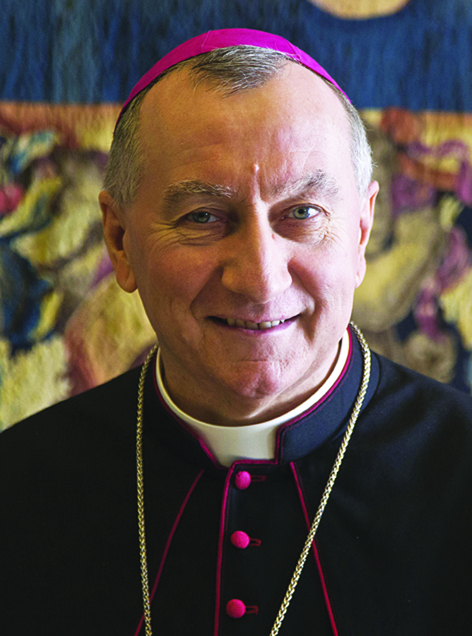
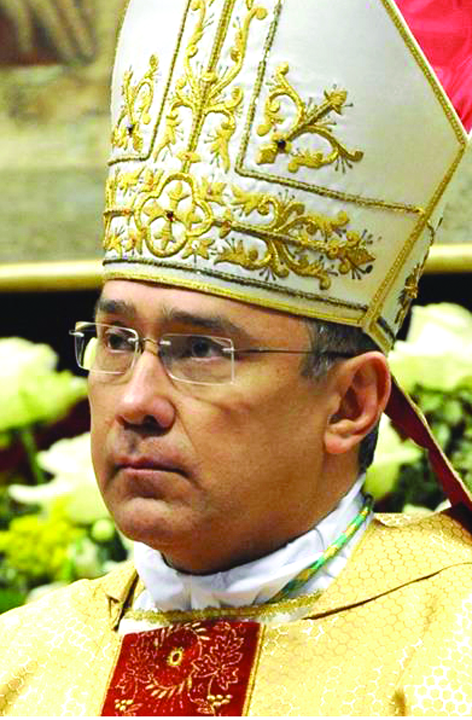
Favorable, the Secretary of State, Cardinal Pietro Parolin, and the substitute, Archbishop Peña Parra
St. Pius V specifying that this Mass cannot be abrogated, Paul VI forbidding it, Benedict XVI re-establishing it, Francis again seeking to make it disappear: how can the Church’s decisions be taken seriously under these conditions?
You are right. We must review the text of Quo Primum and what exactly St. Pius V says: he is saying that no one can prevent a priest from celebrating this Mass, no matter where he is in the Church, in order to oblige him to say it in one of the particular rites (Lyon, etc.)…
Aren’t we there in a certain way?
In a certain way, we are there, indeed. The Mass of Saint Pius V, when it was abrogated by Paul VI (because it was abrogated, it must be said, Jean Madiran rightly pointed it out), was identical, almost in detail, to what it was in the 11th century. Benedict XVI, in Summorum Pontificum, said that it had never been abrogated. Then Francis again abrogates it… That doesn’t sound very serious. Everything is allowed, any heresy can be professed by men of the Church, who still get to keep their Catholic “identity card” — except those who celebrate or attend the traditional Mass. No, they are accused by the Pope himself of tearing apart the unity of the Church.
So, the bottom line is that this hatred of the traditional Mass has a doctrinal basis?
Absolutely. It is the hatred of the Tridentine ecclesiology, of all that this Mass represents from the point of view of Eucharistic doctrine as well as the doctrine of the Church. [English translation by Zachary Thomas.]

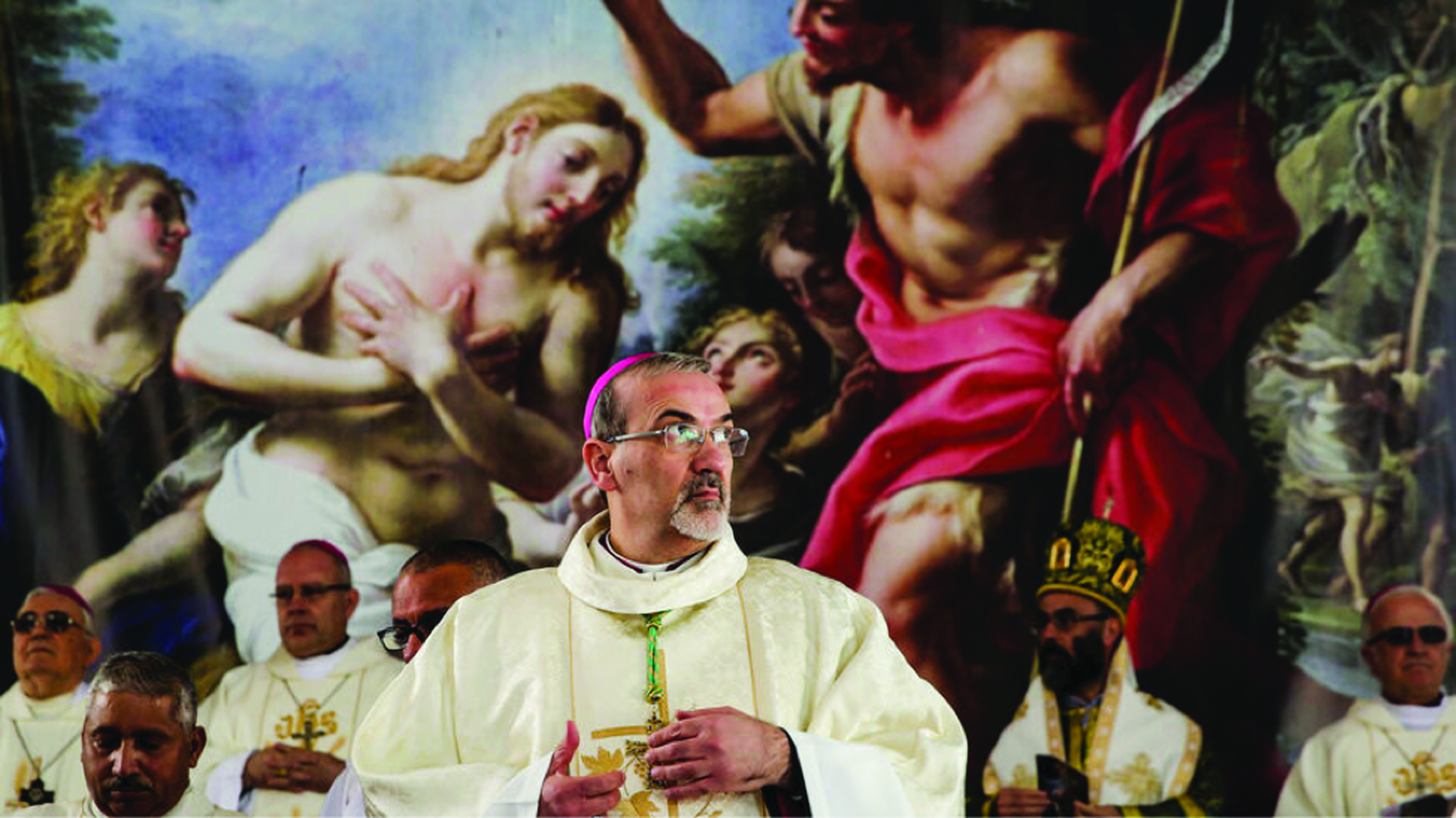
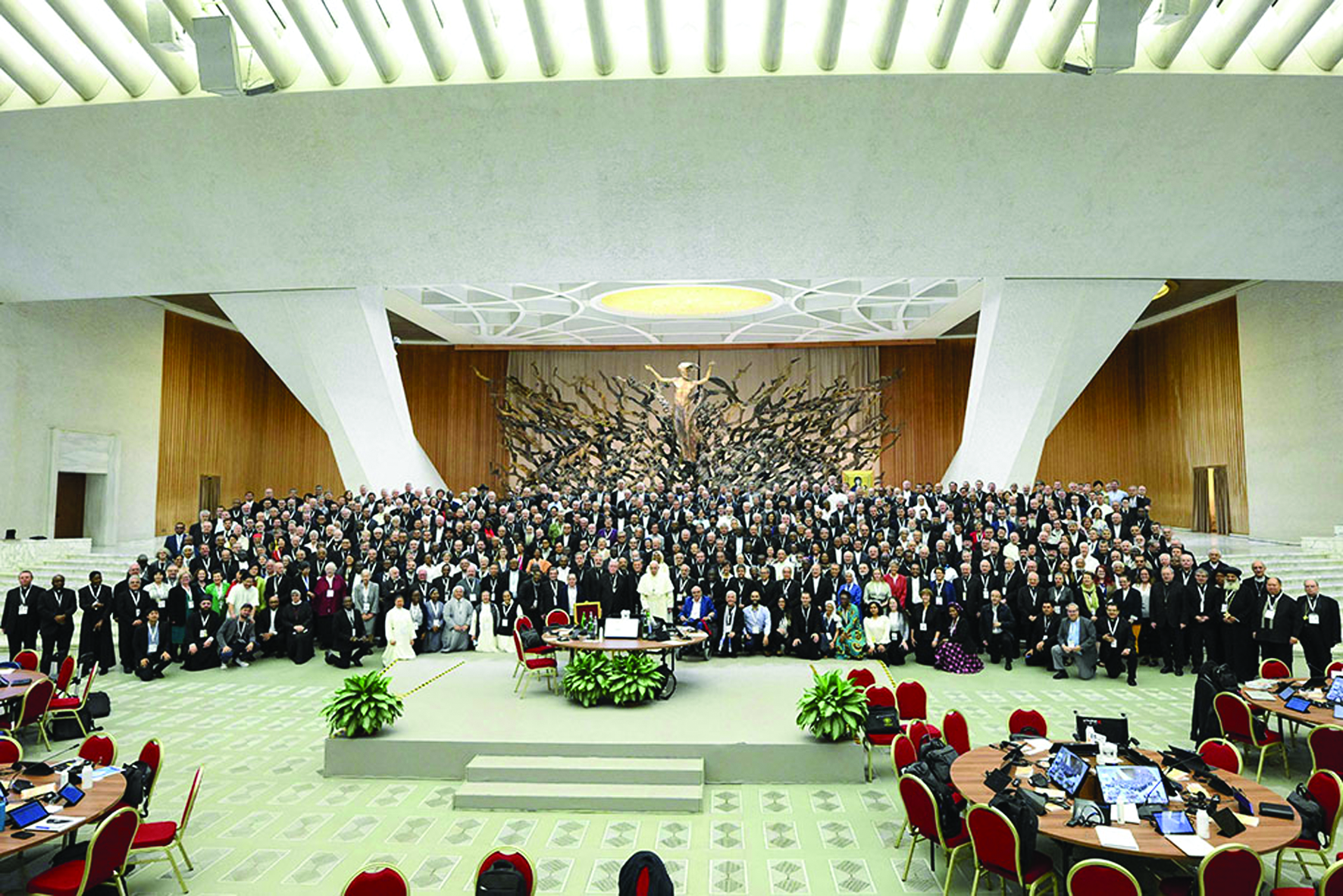
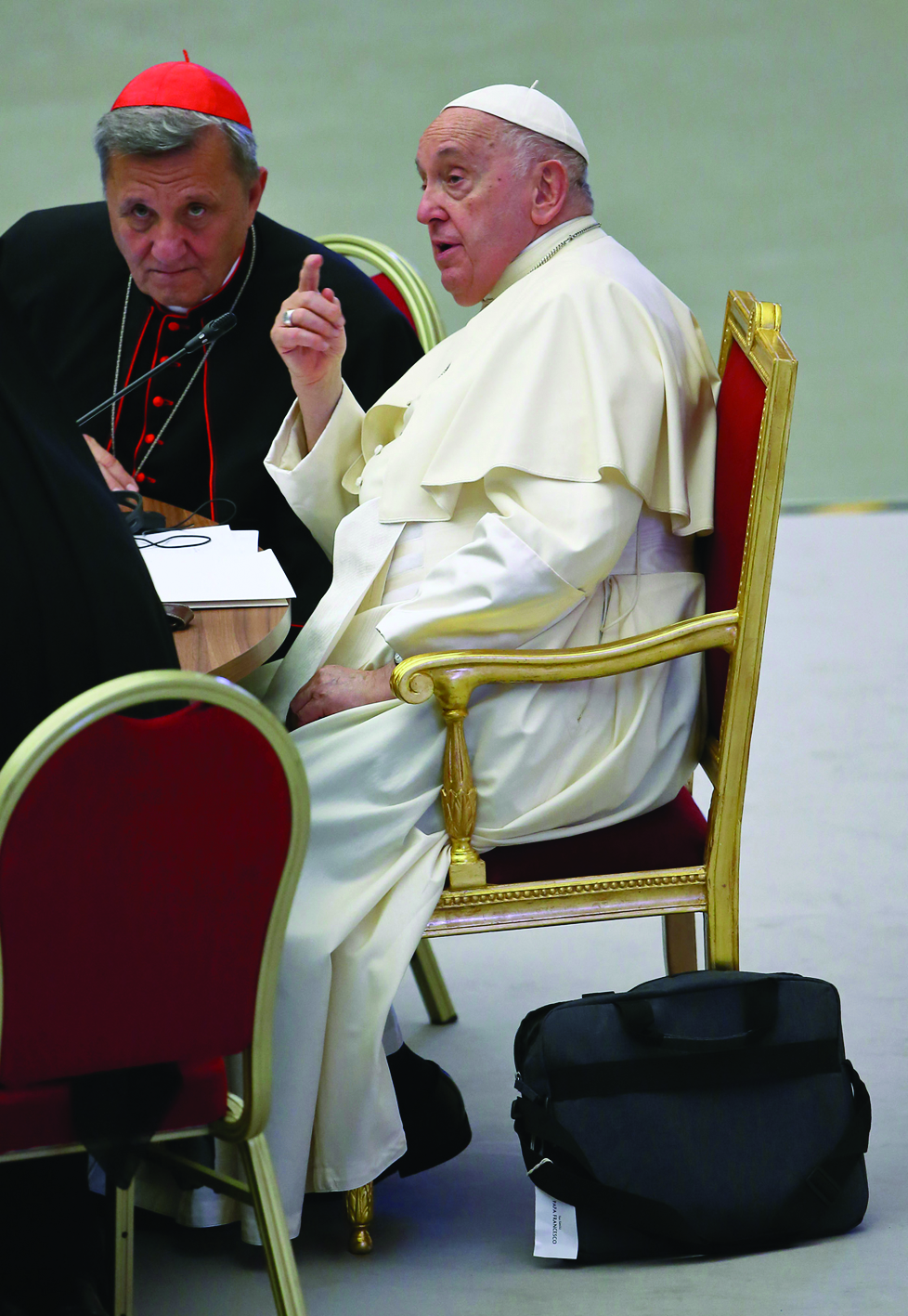
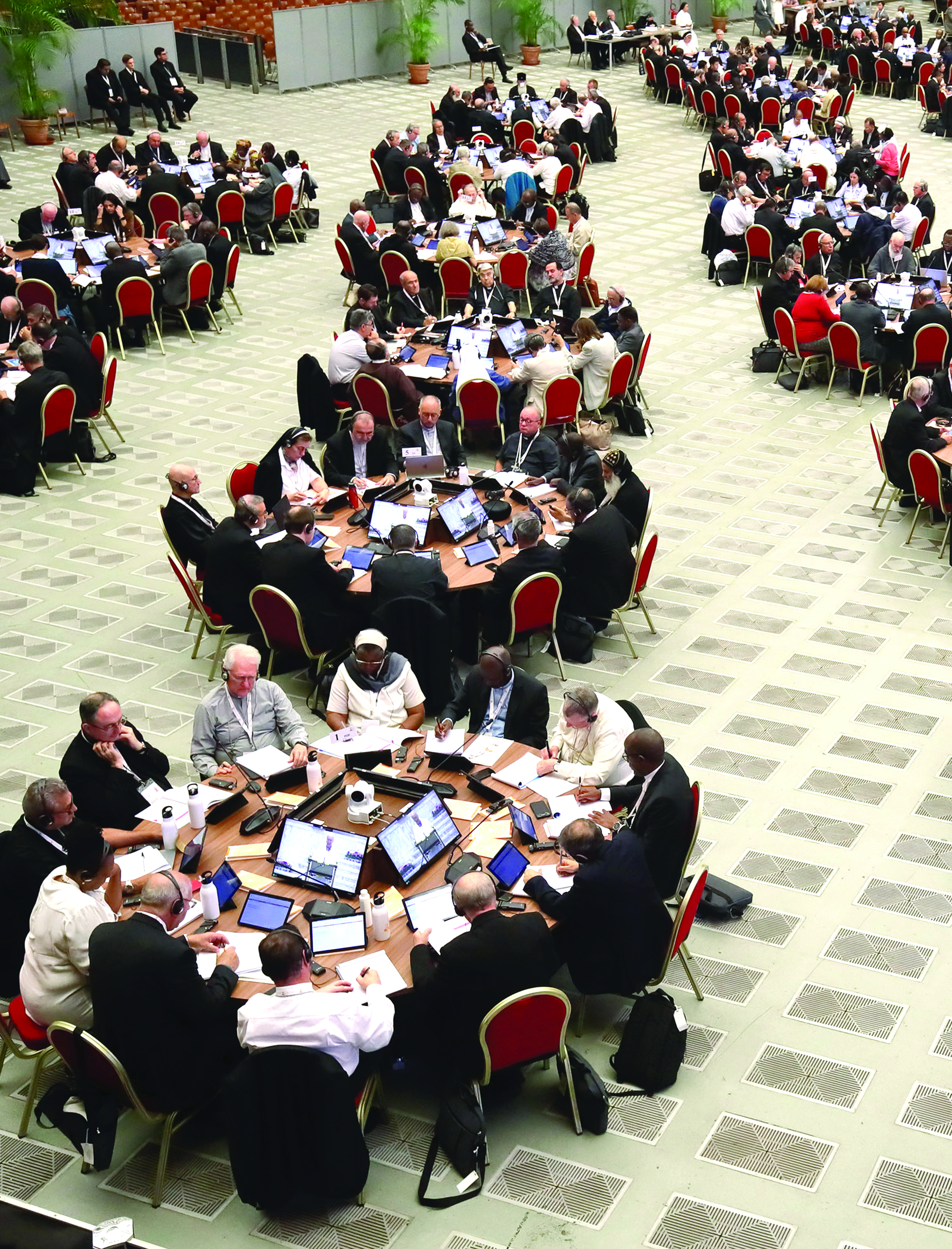
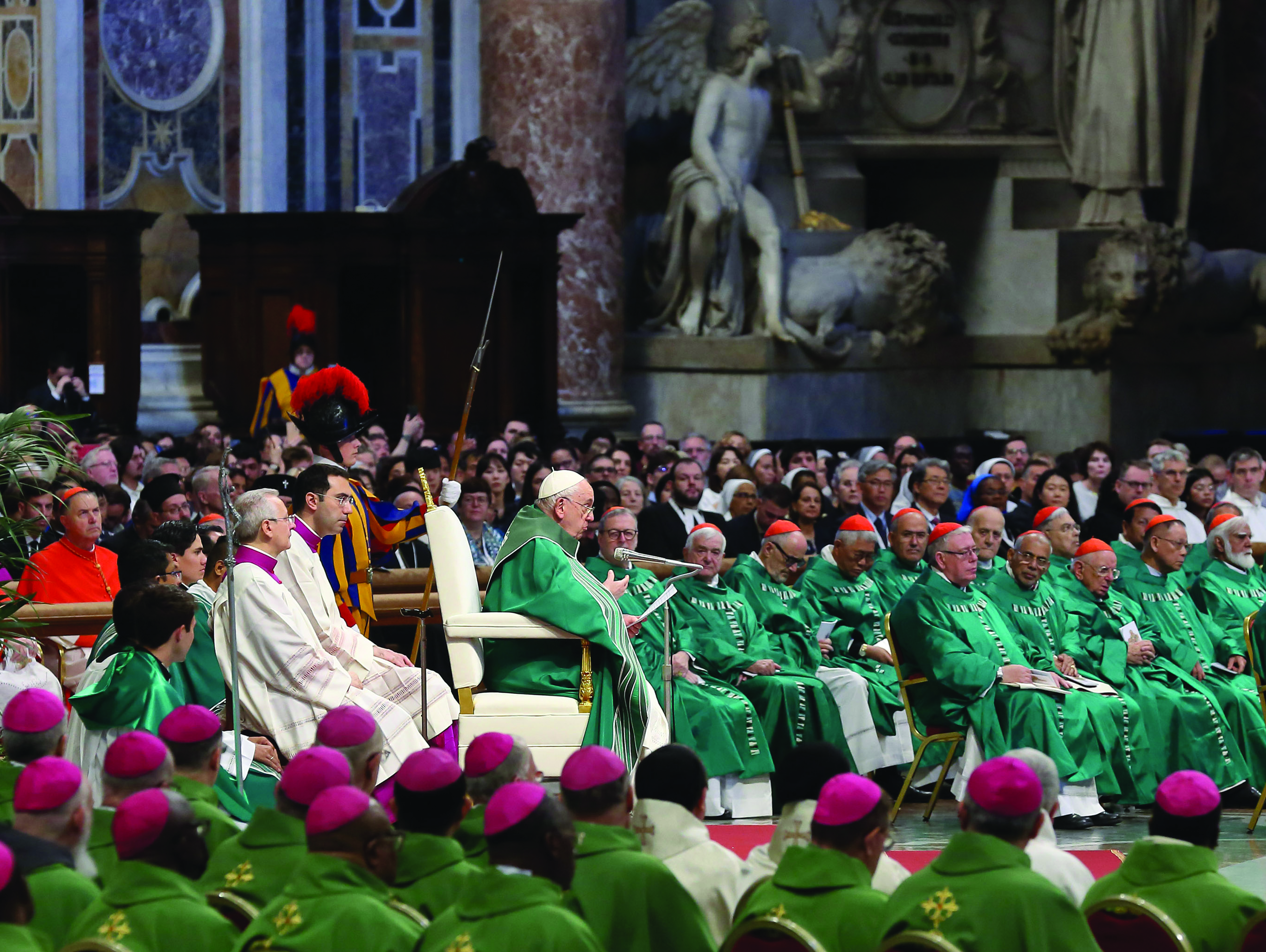
Facebook Comments